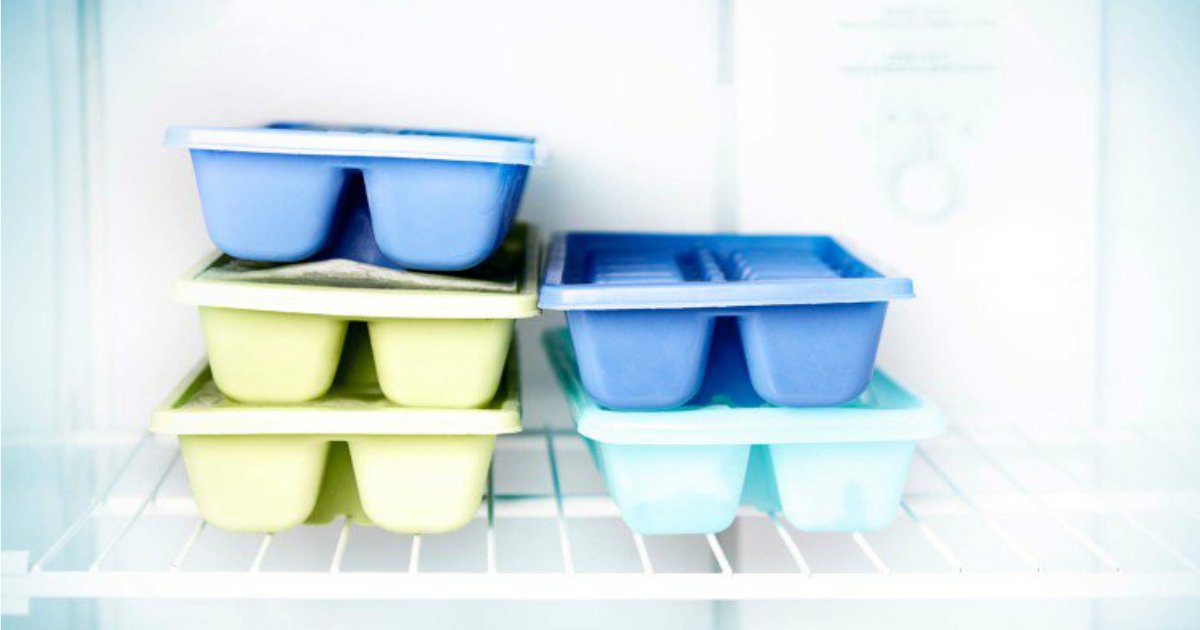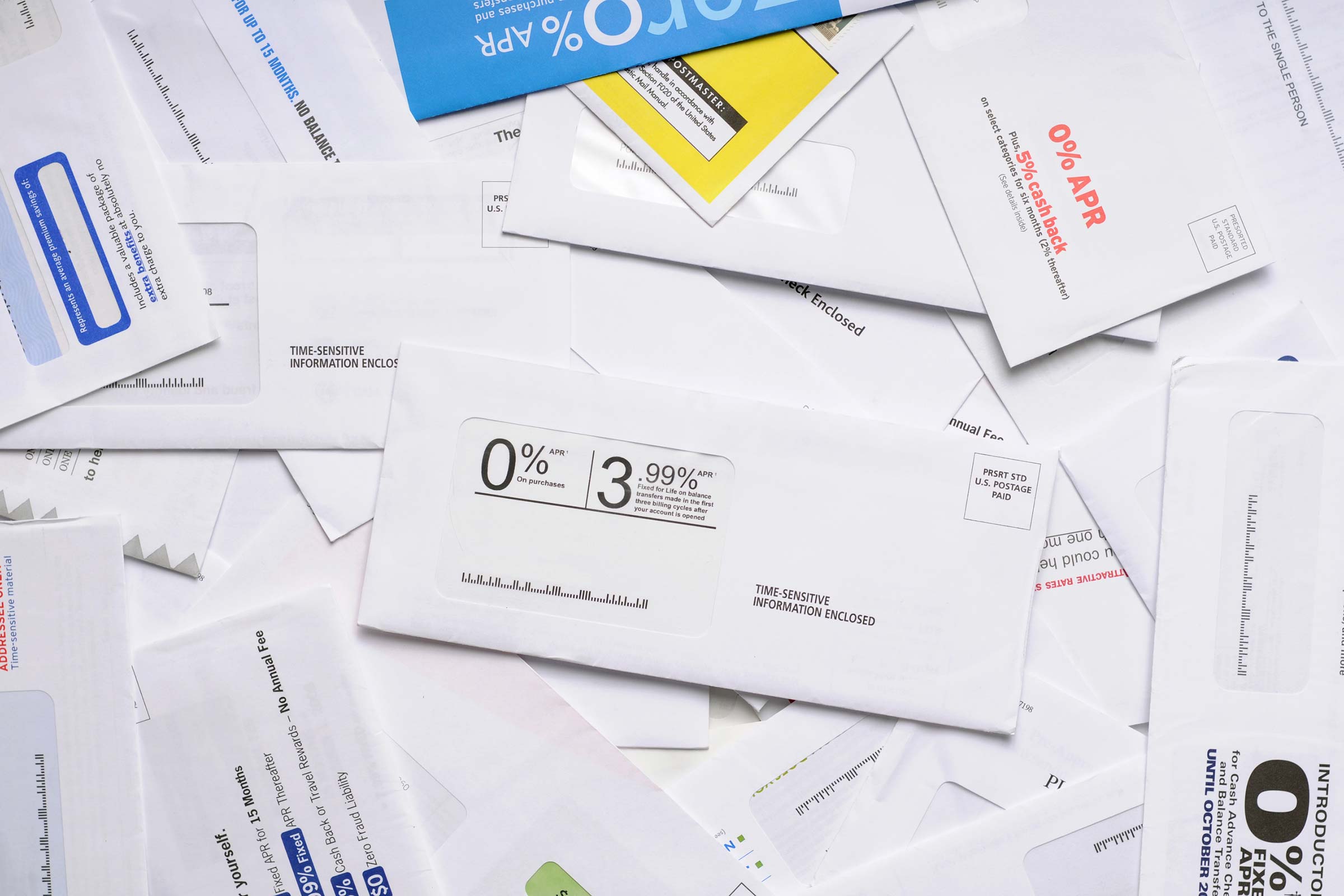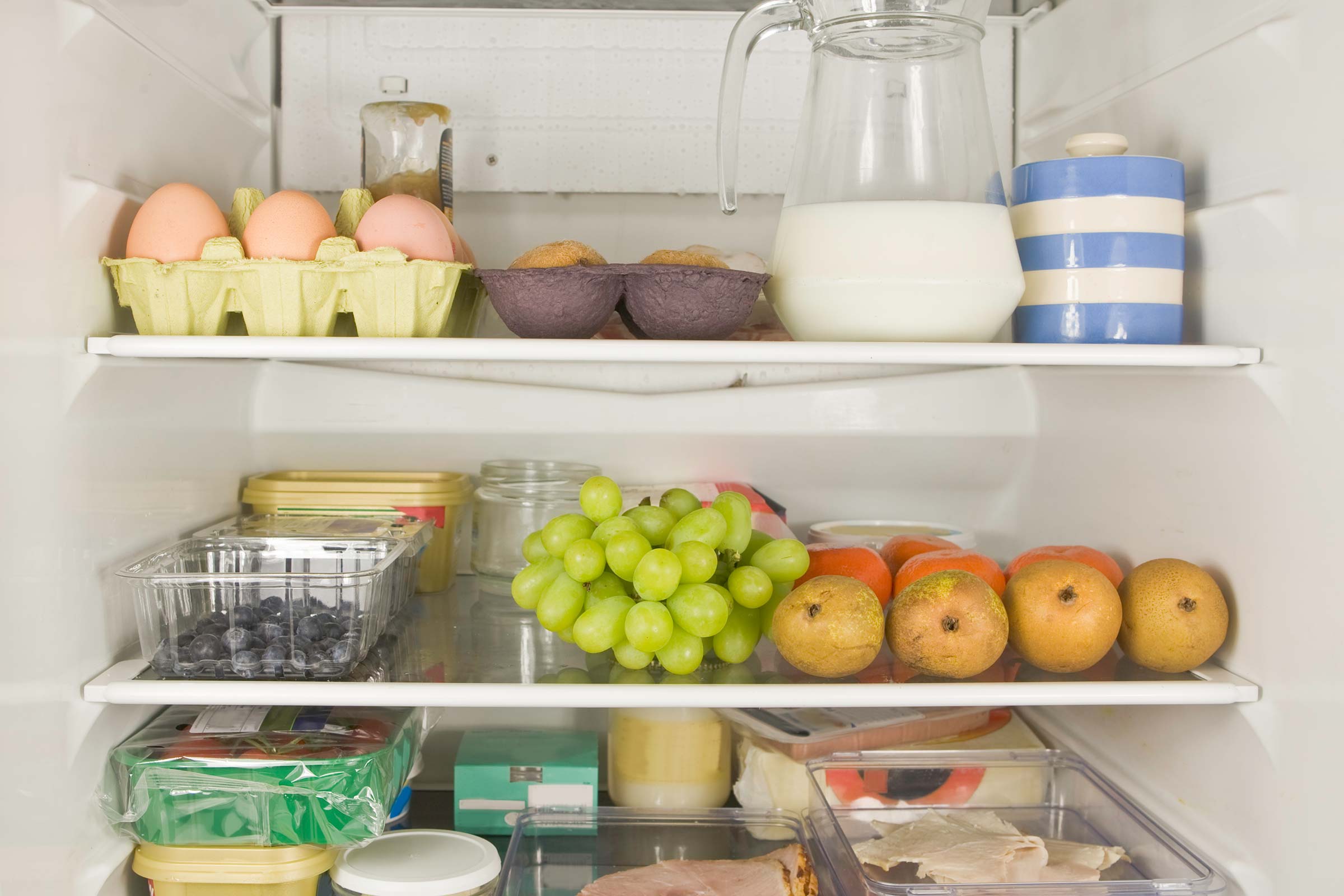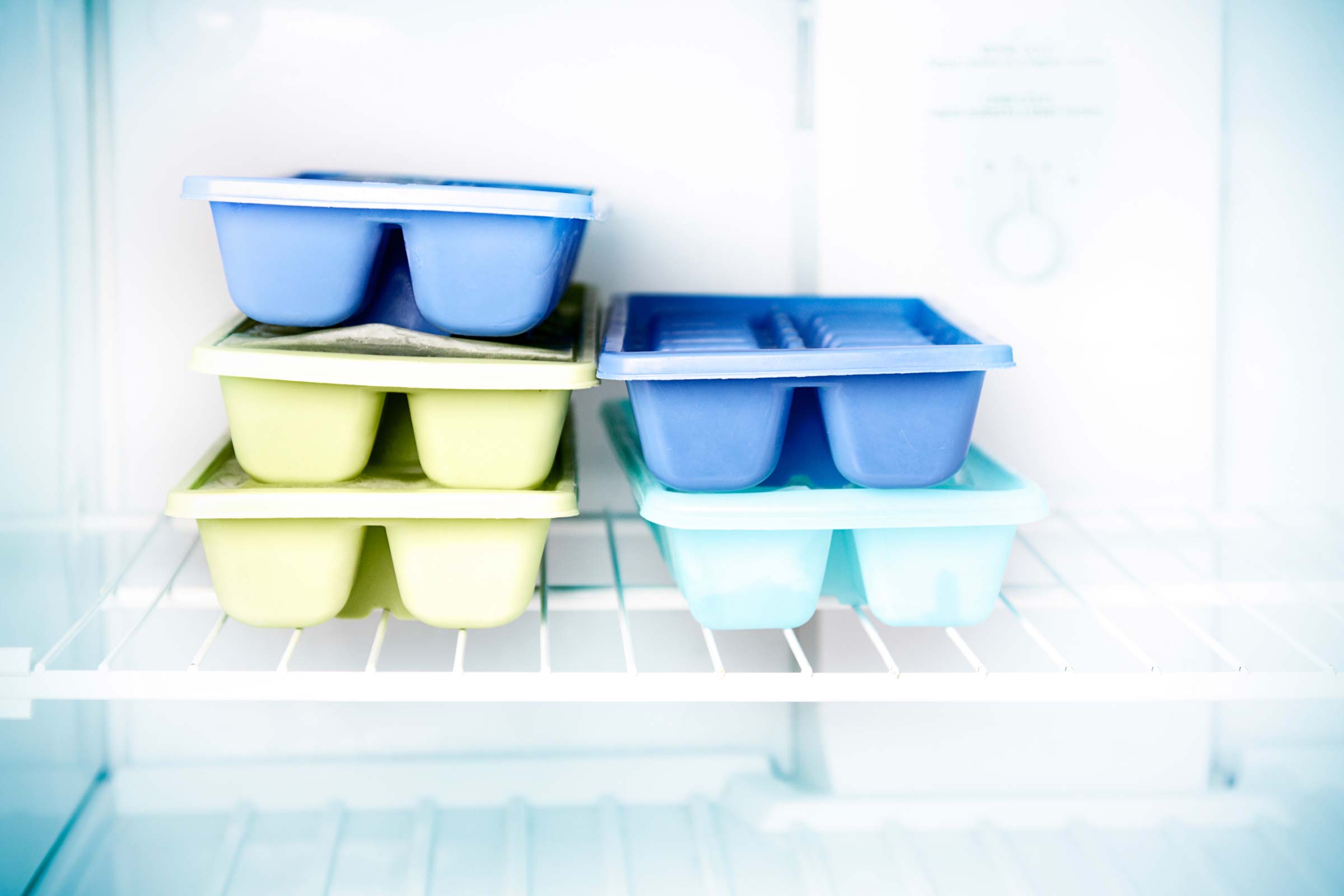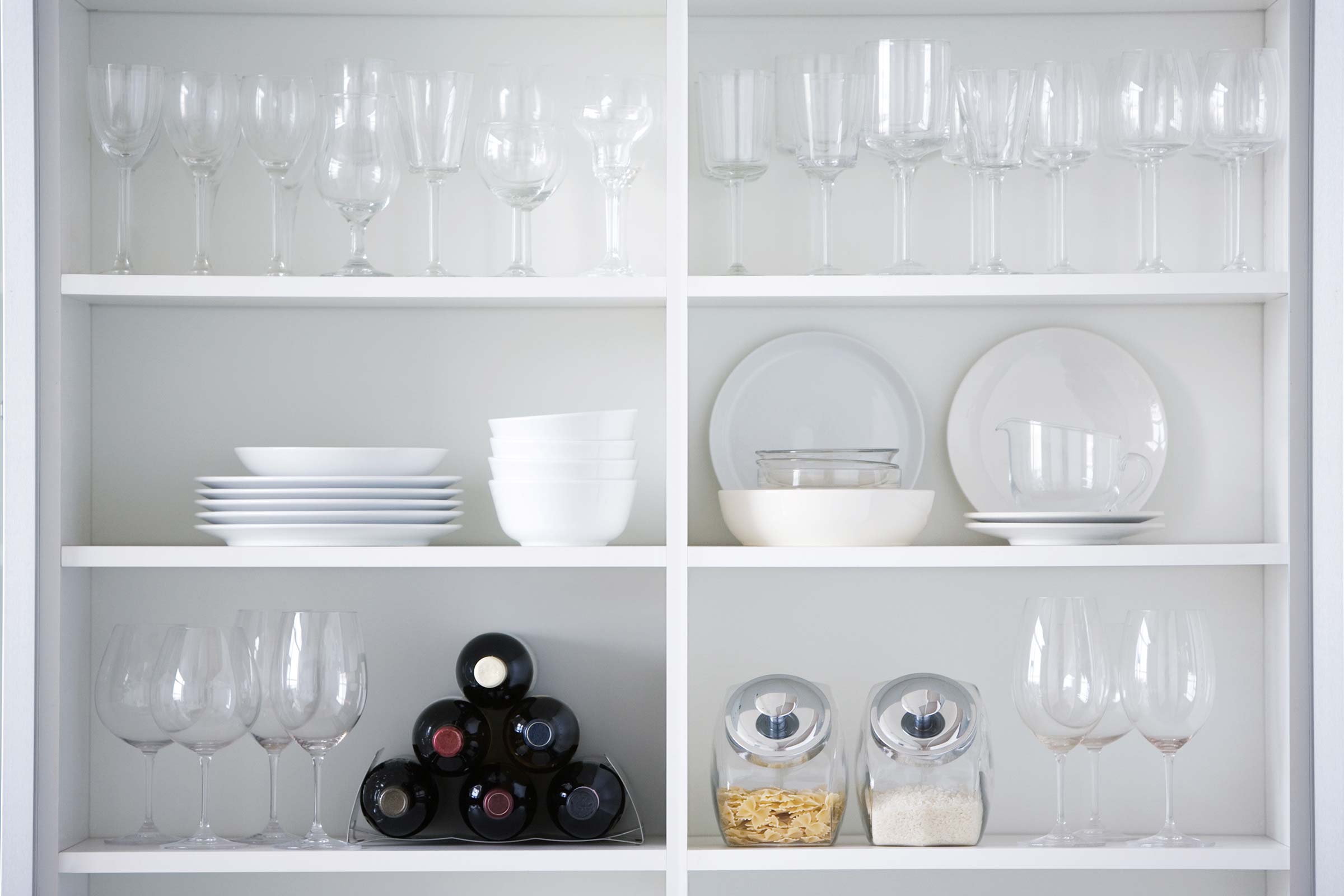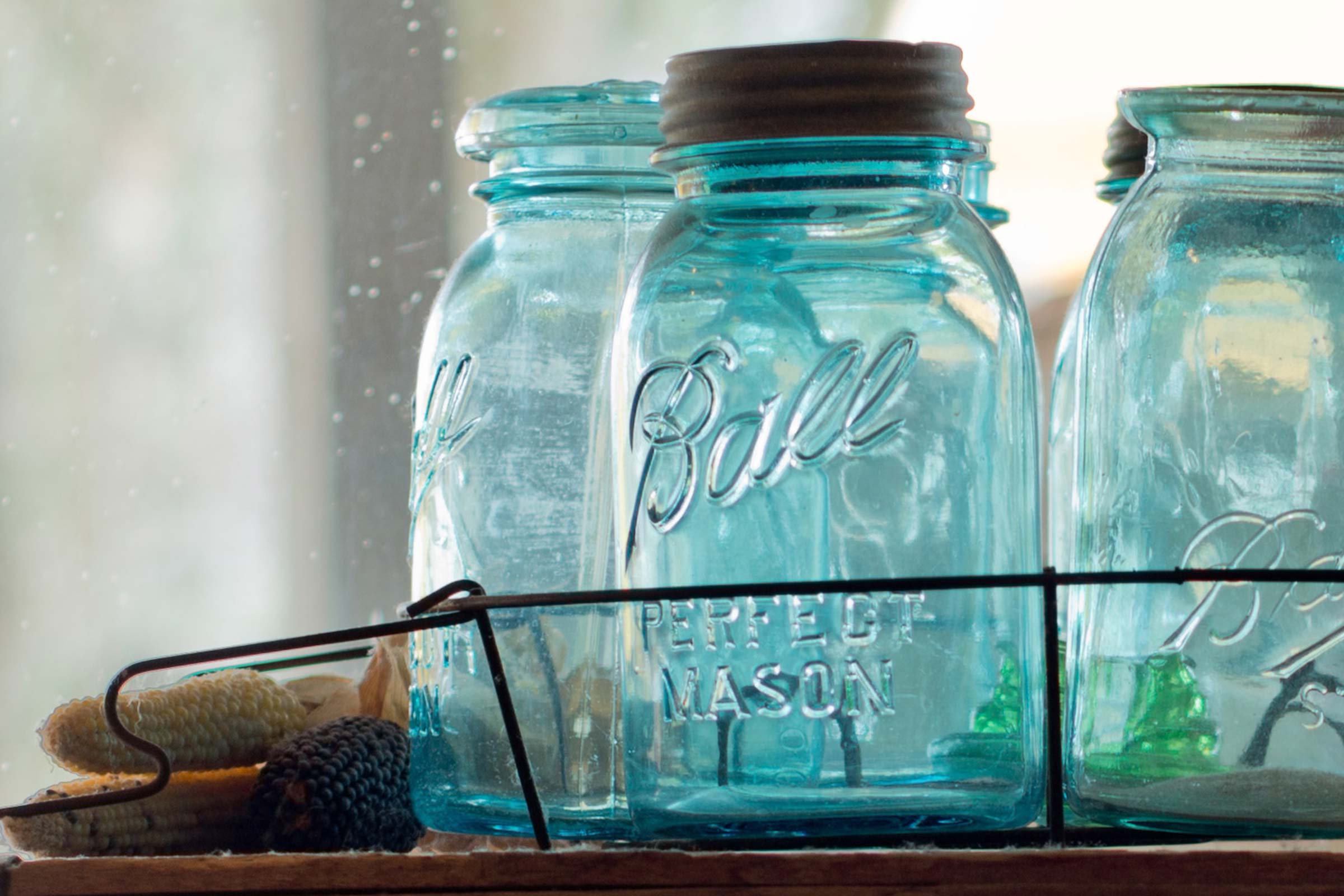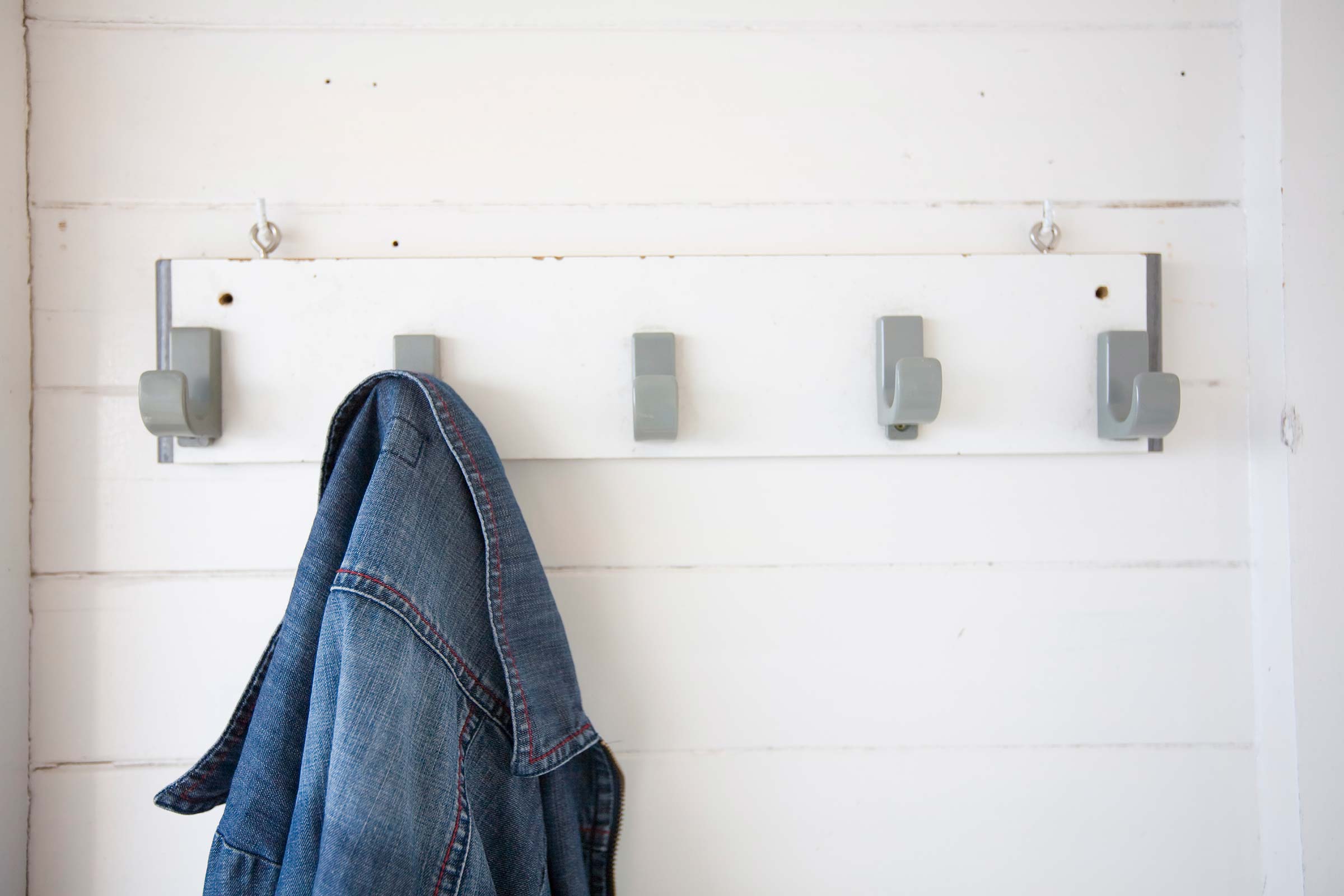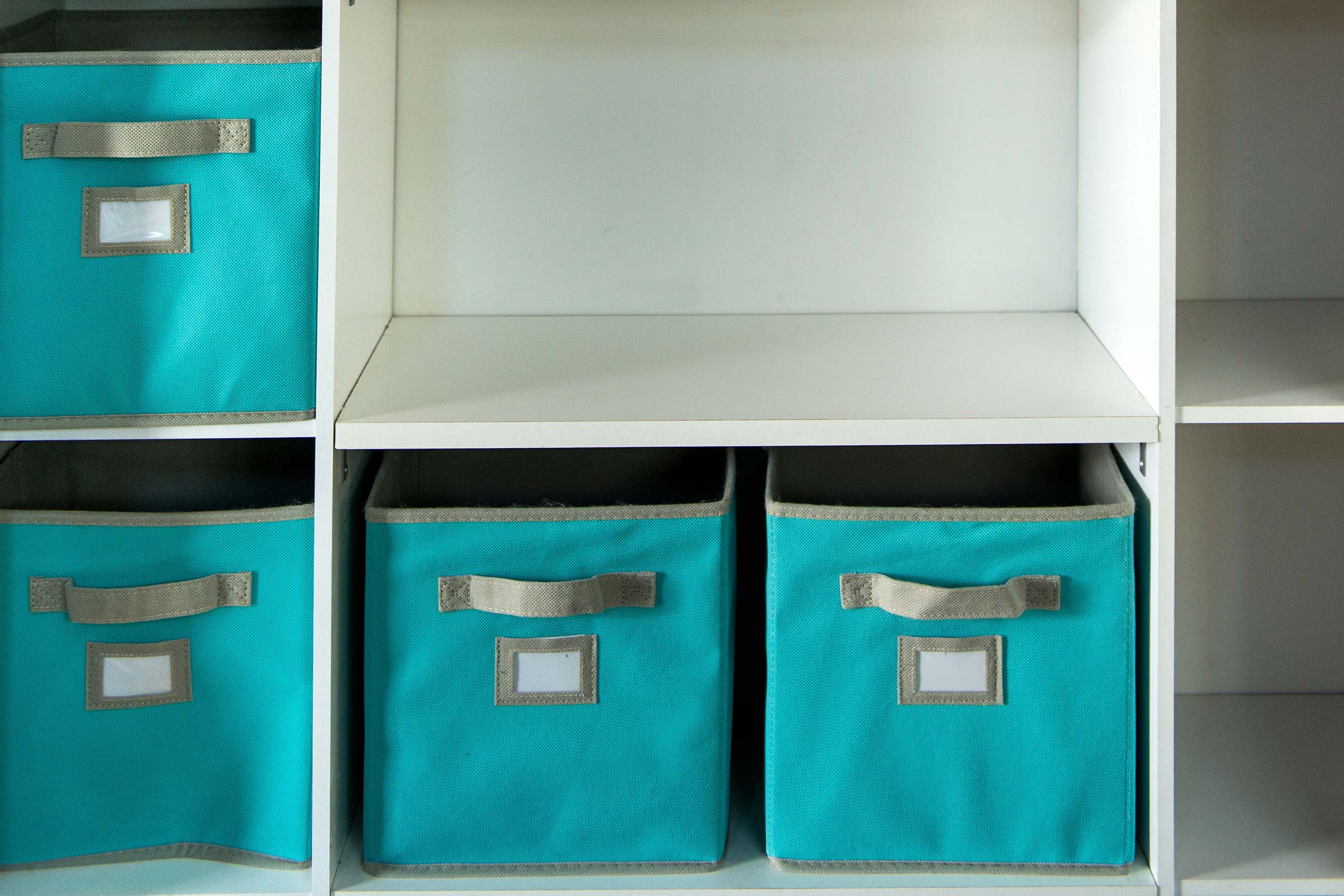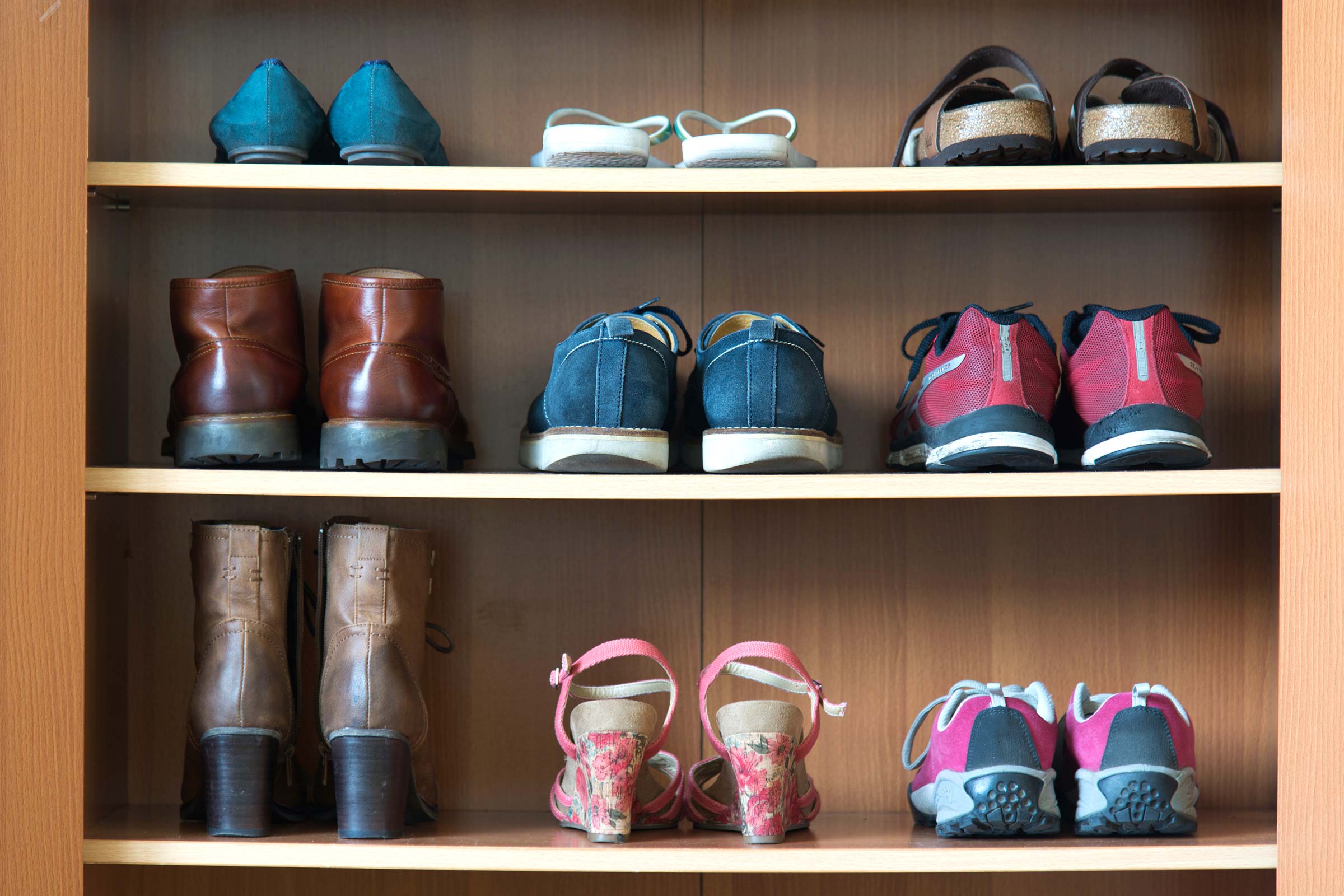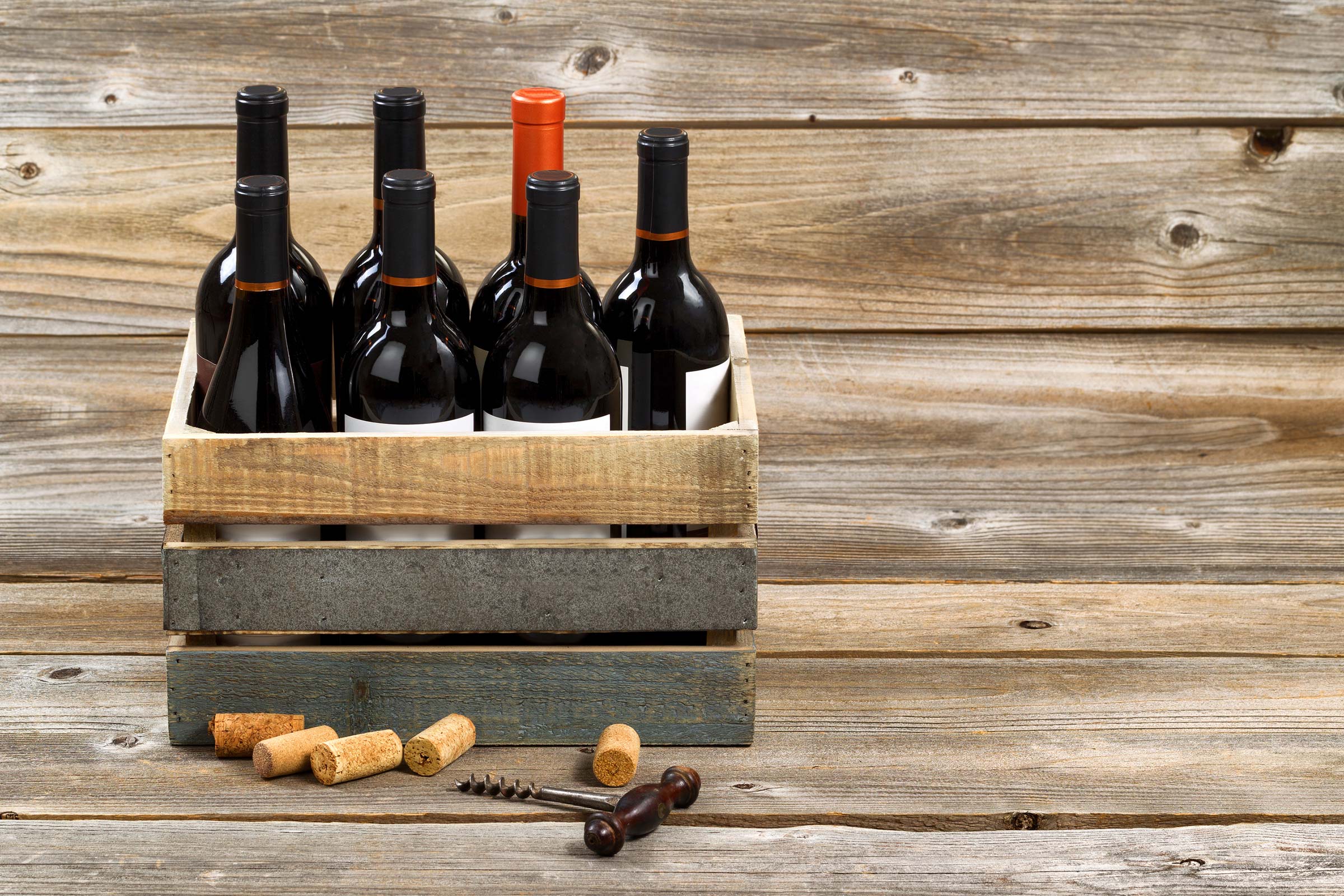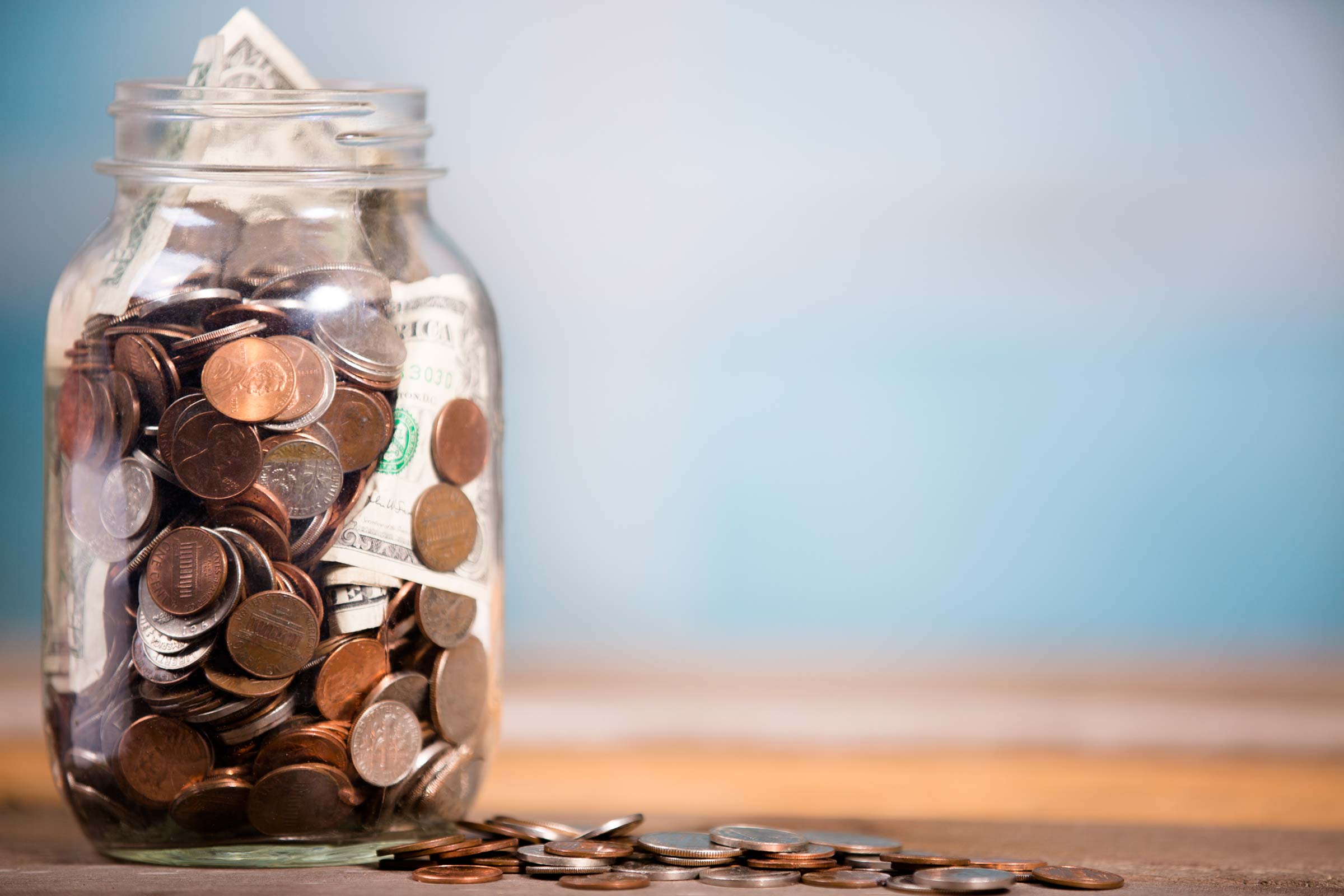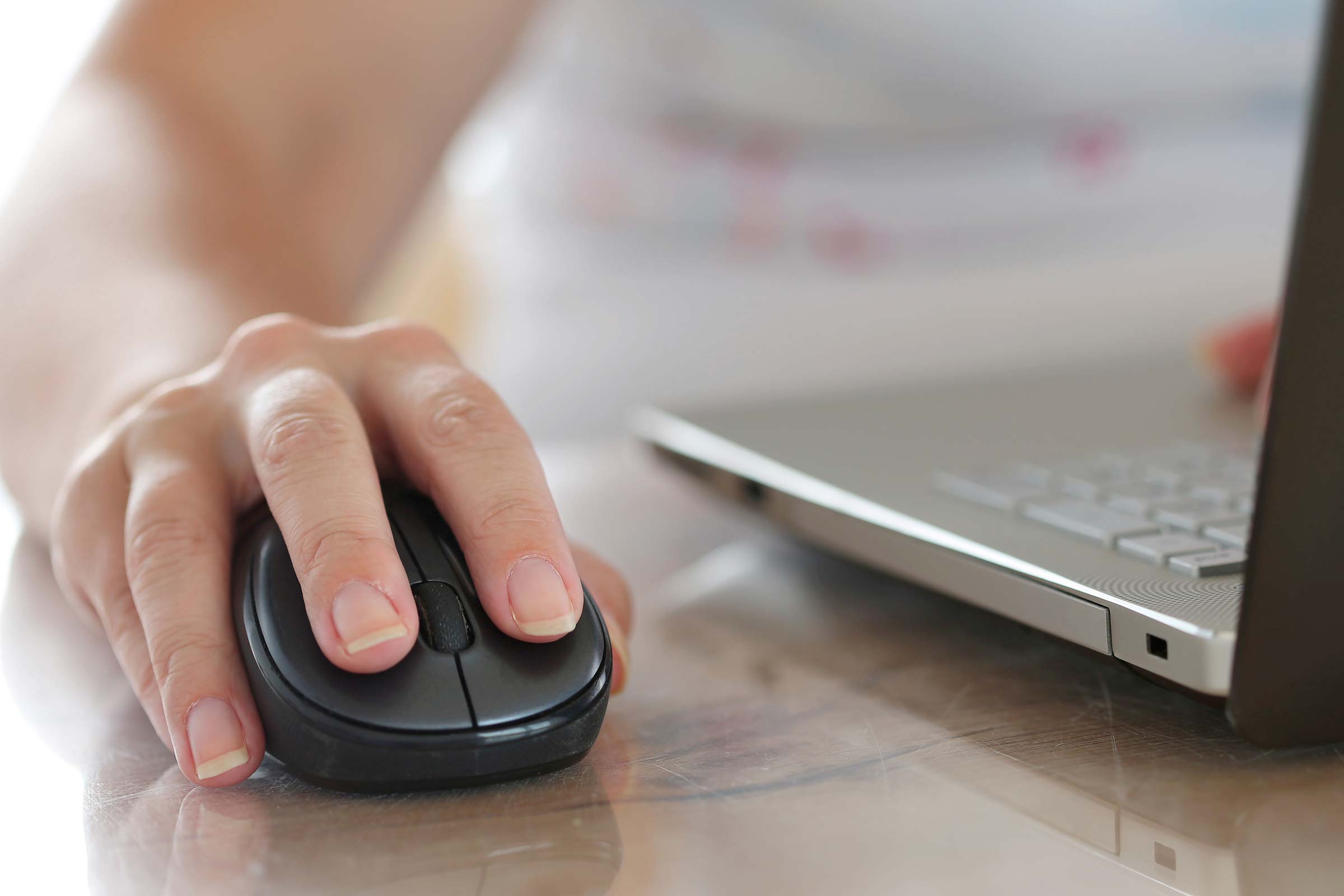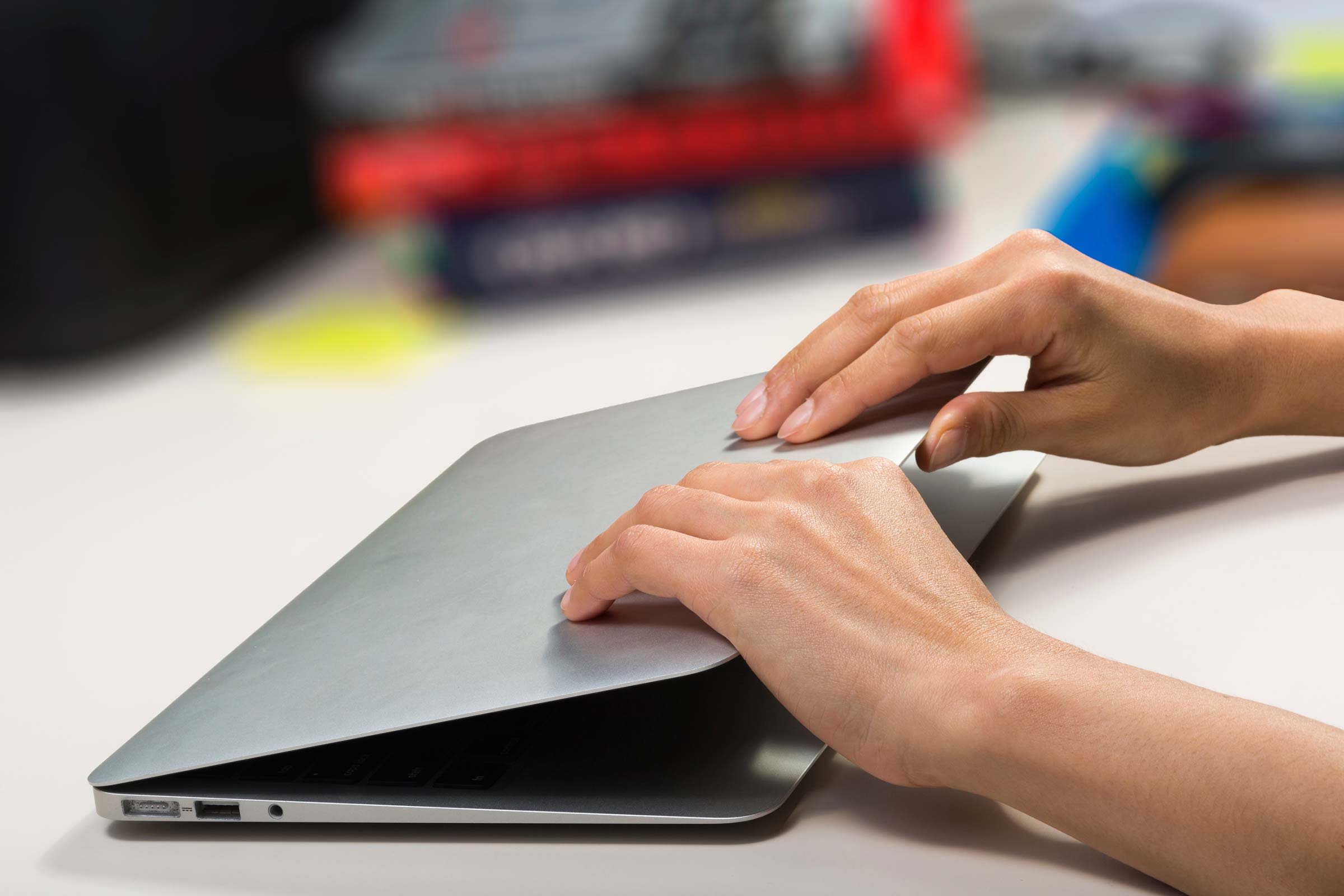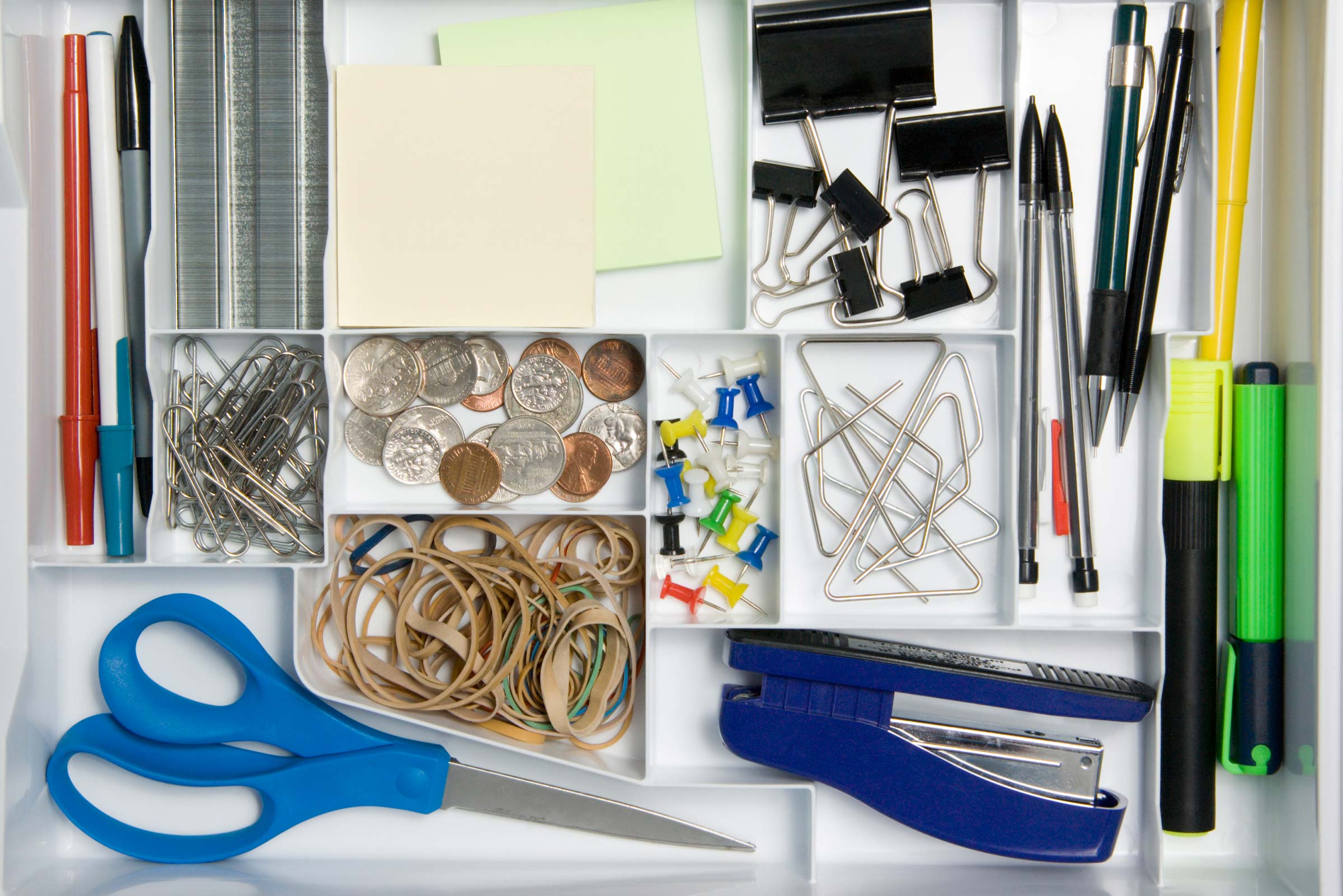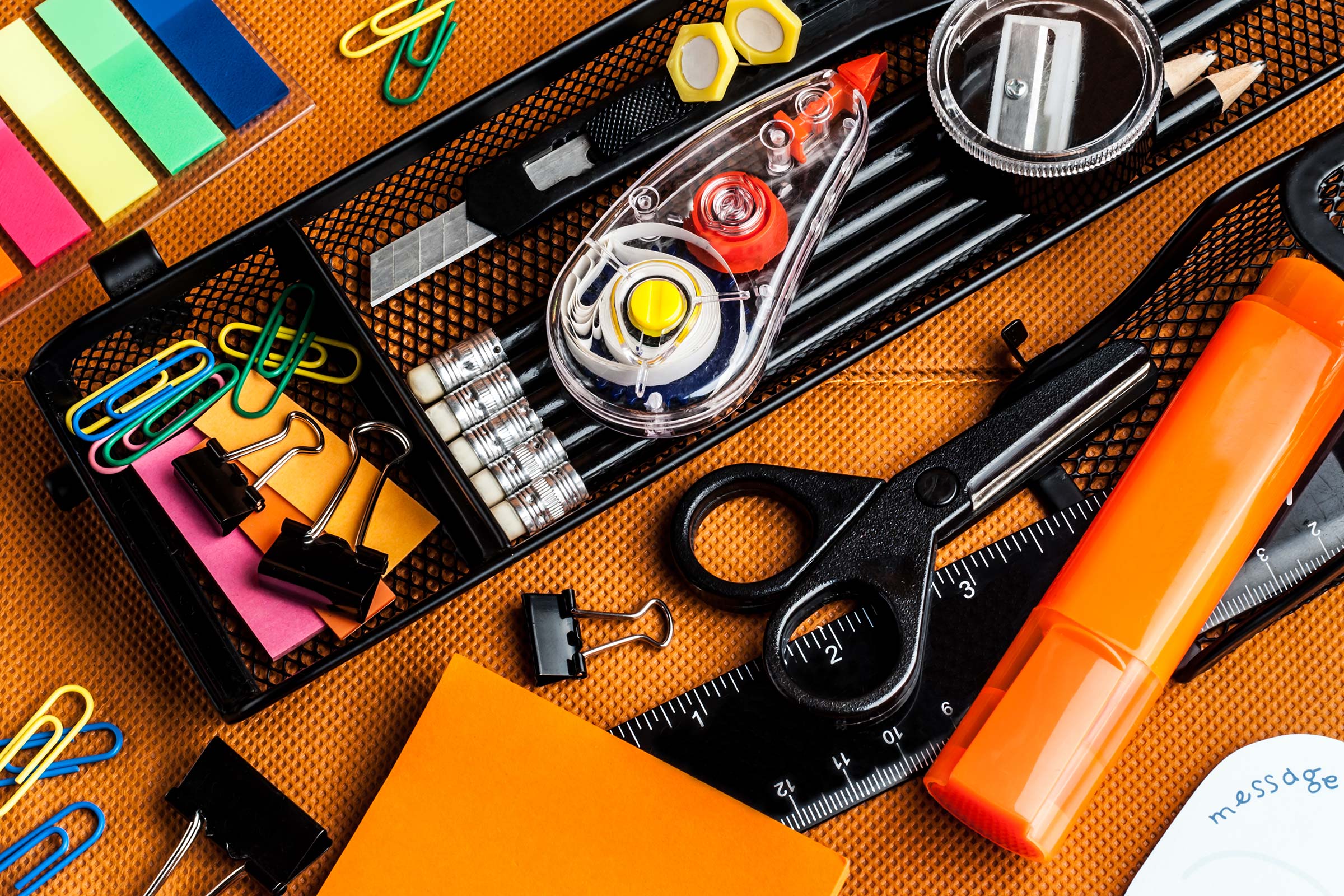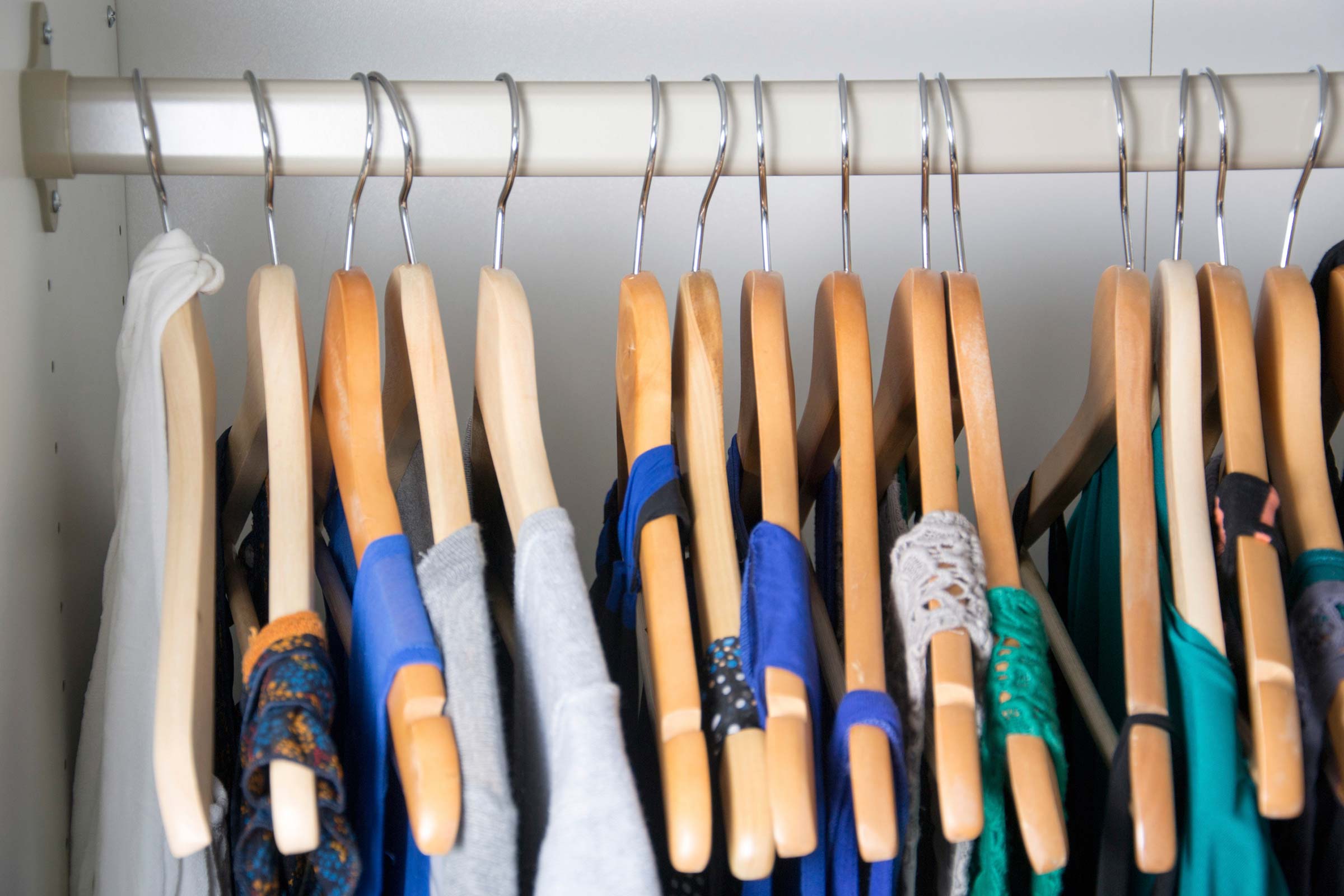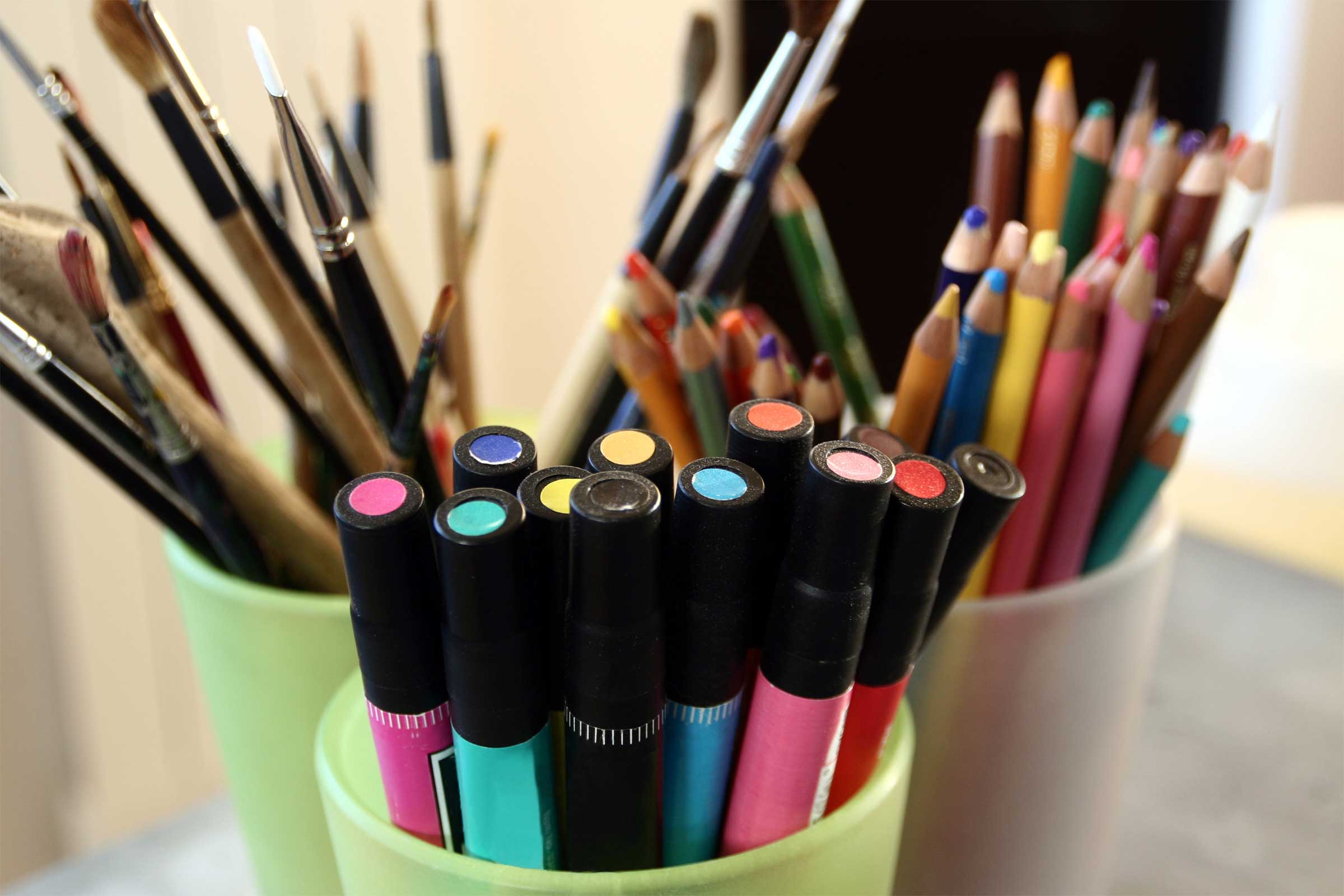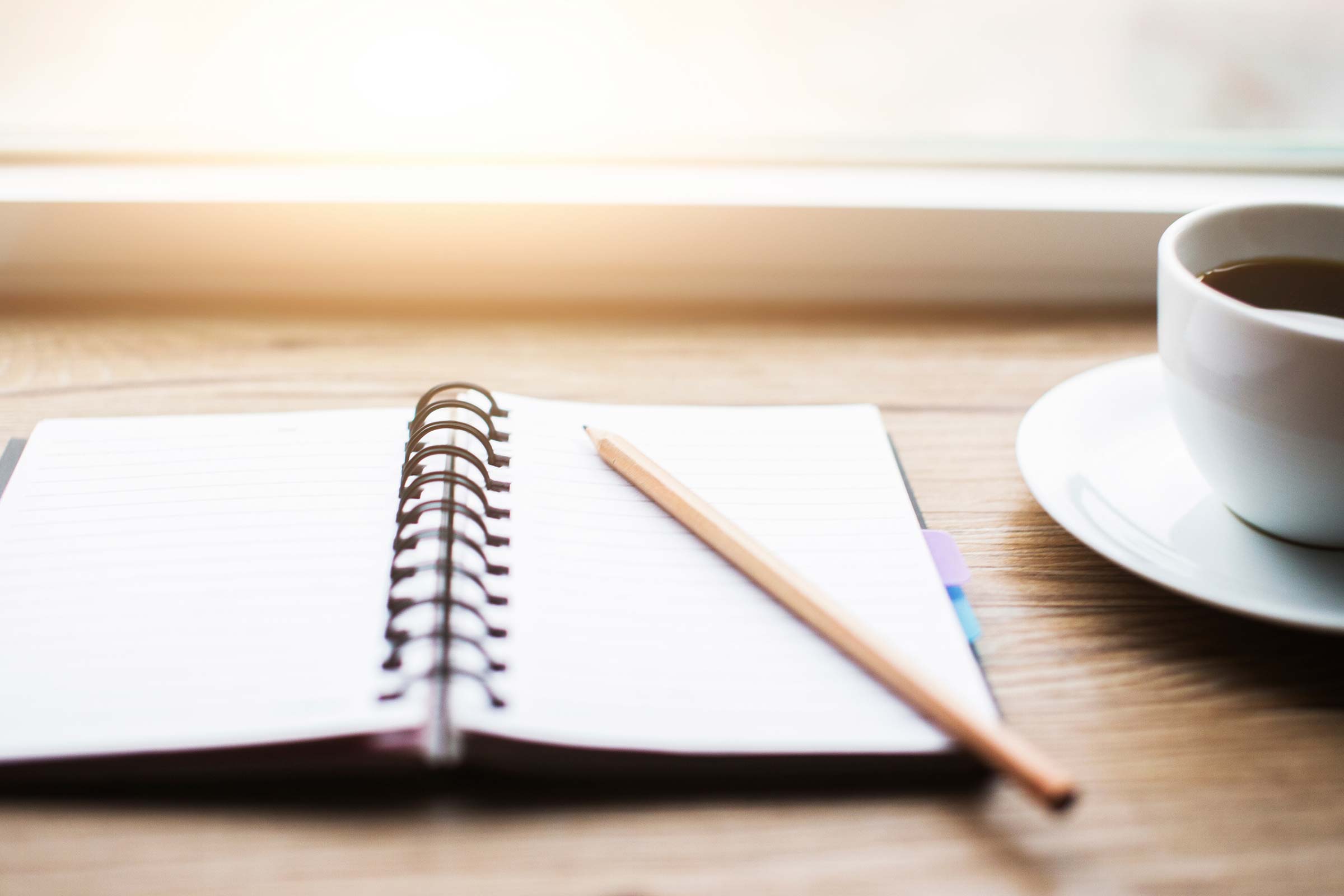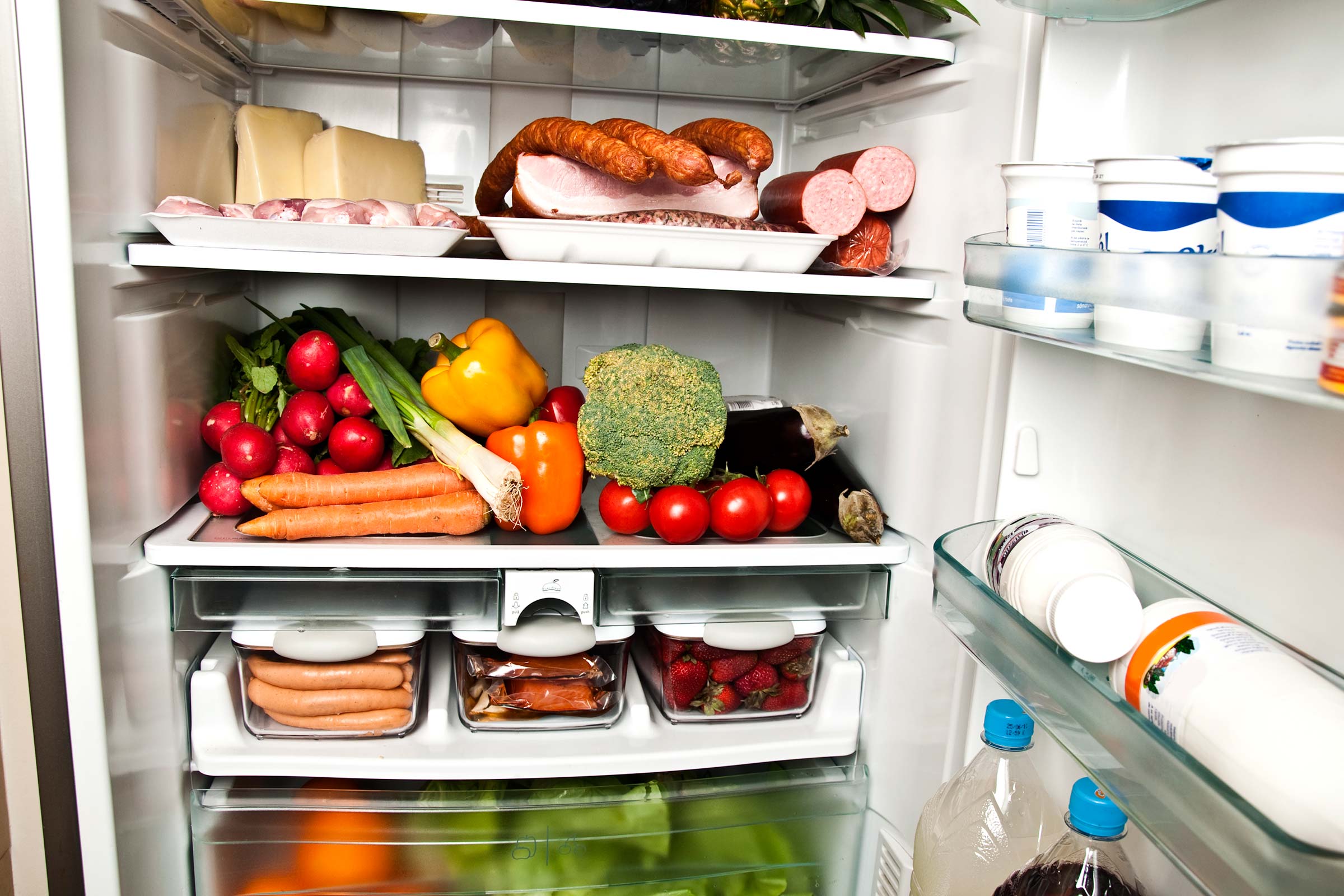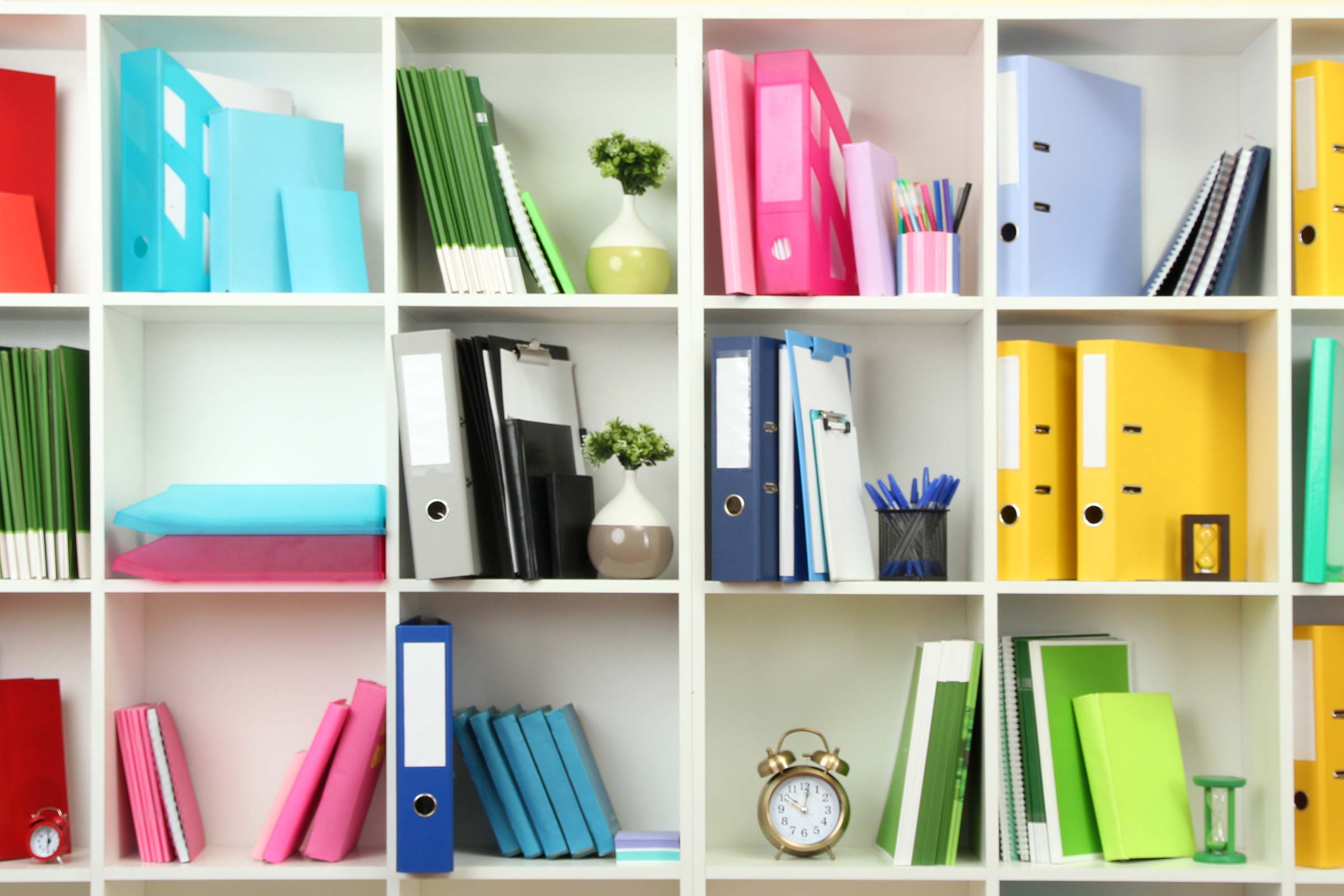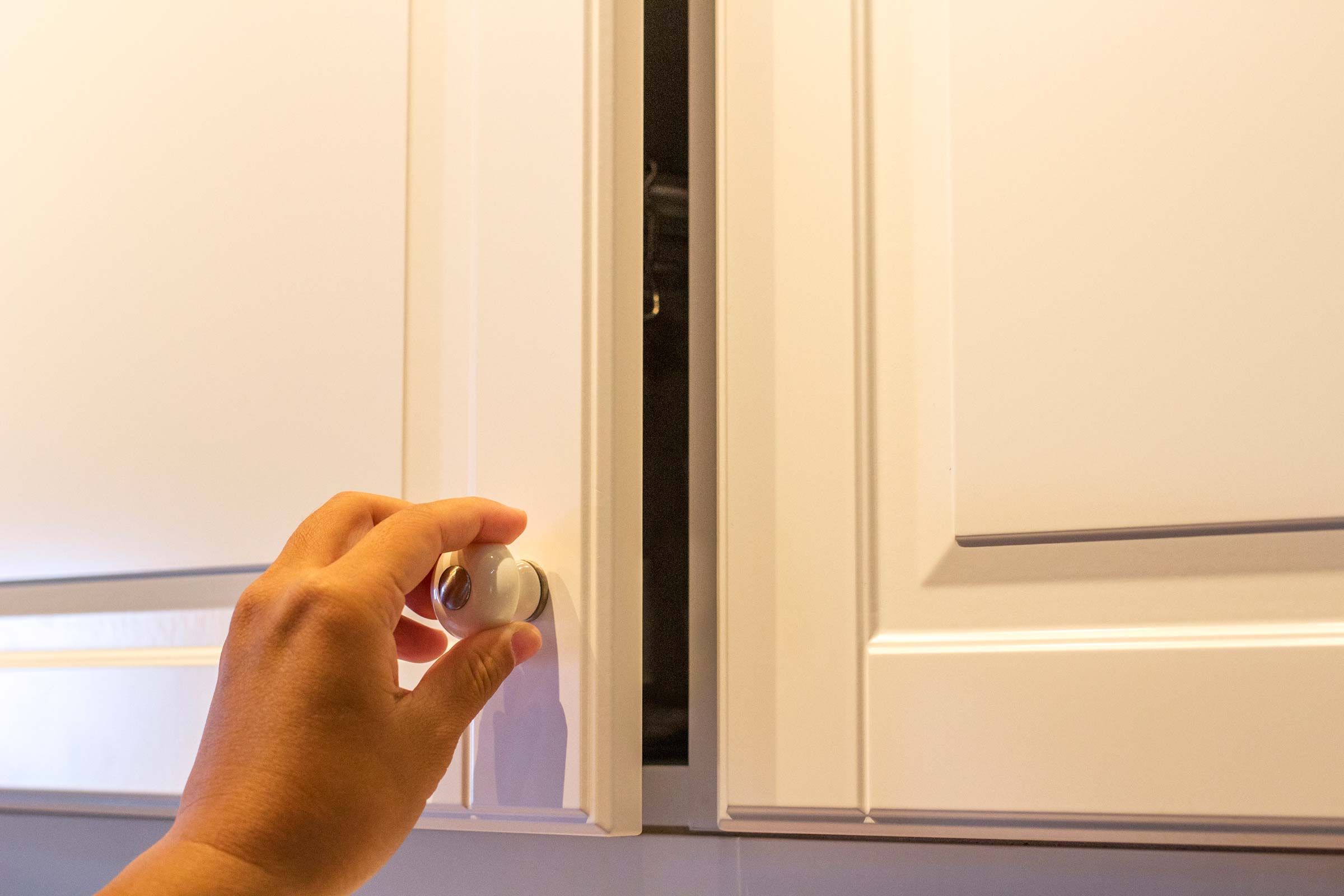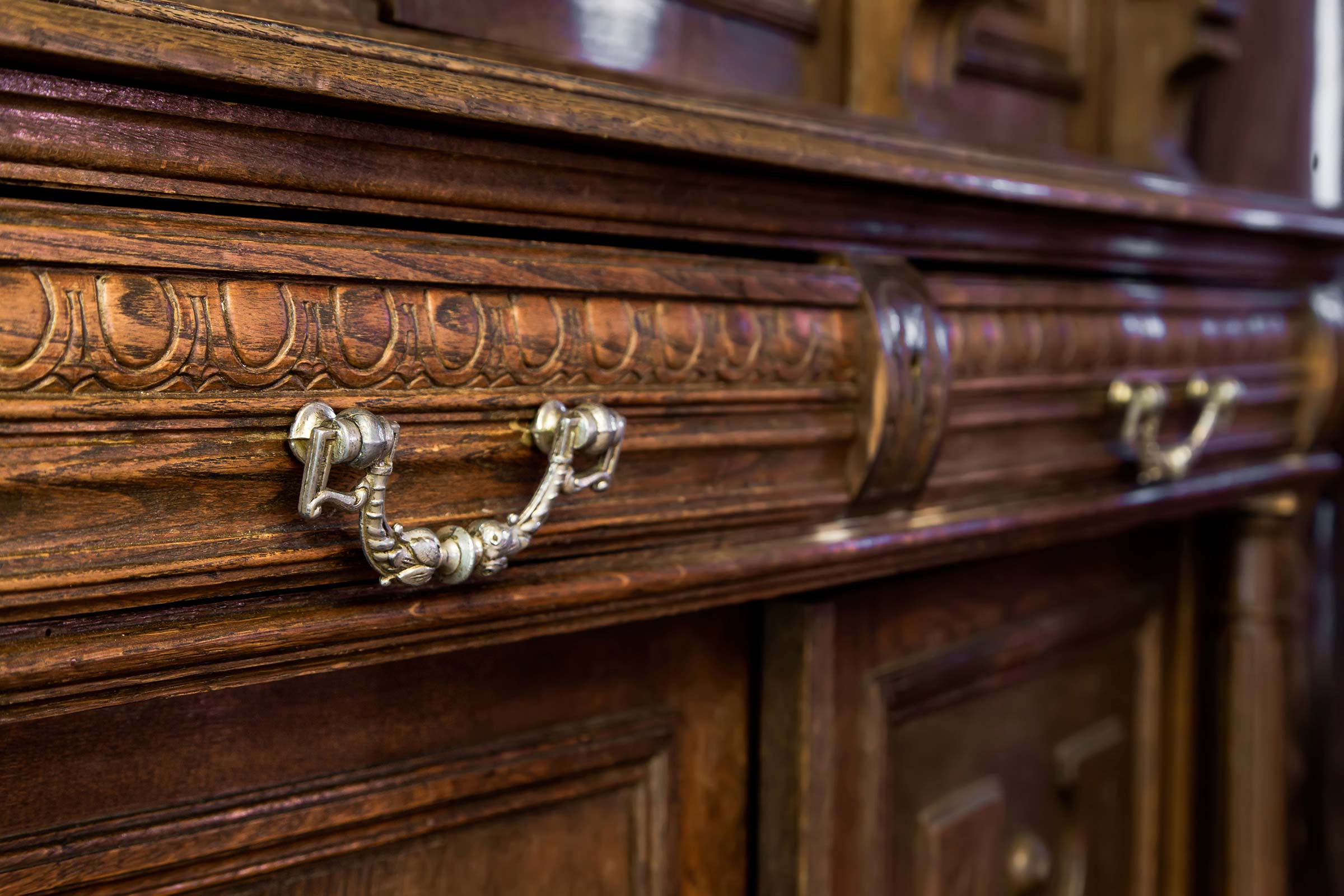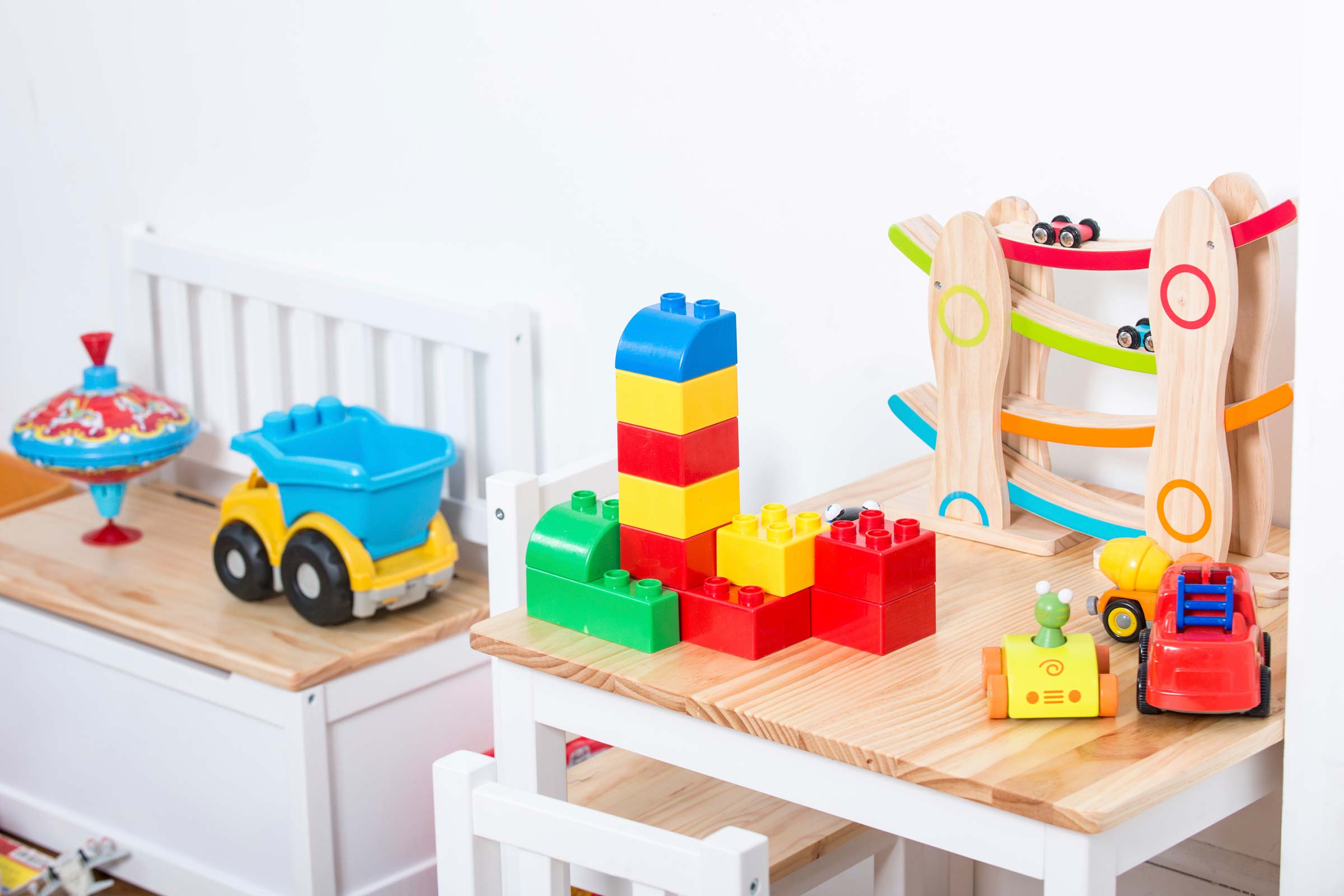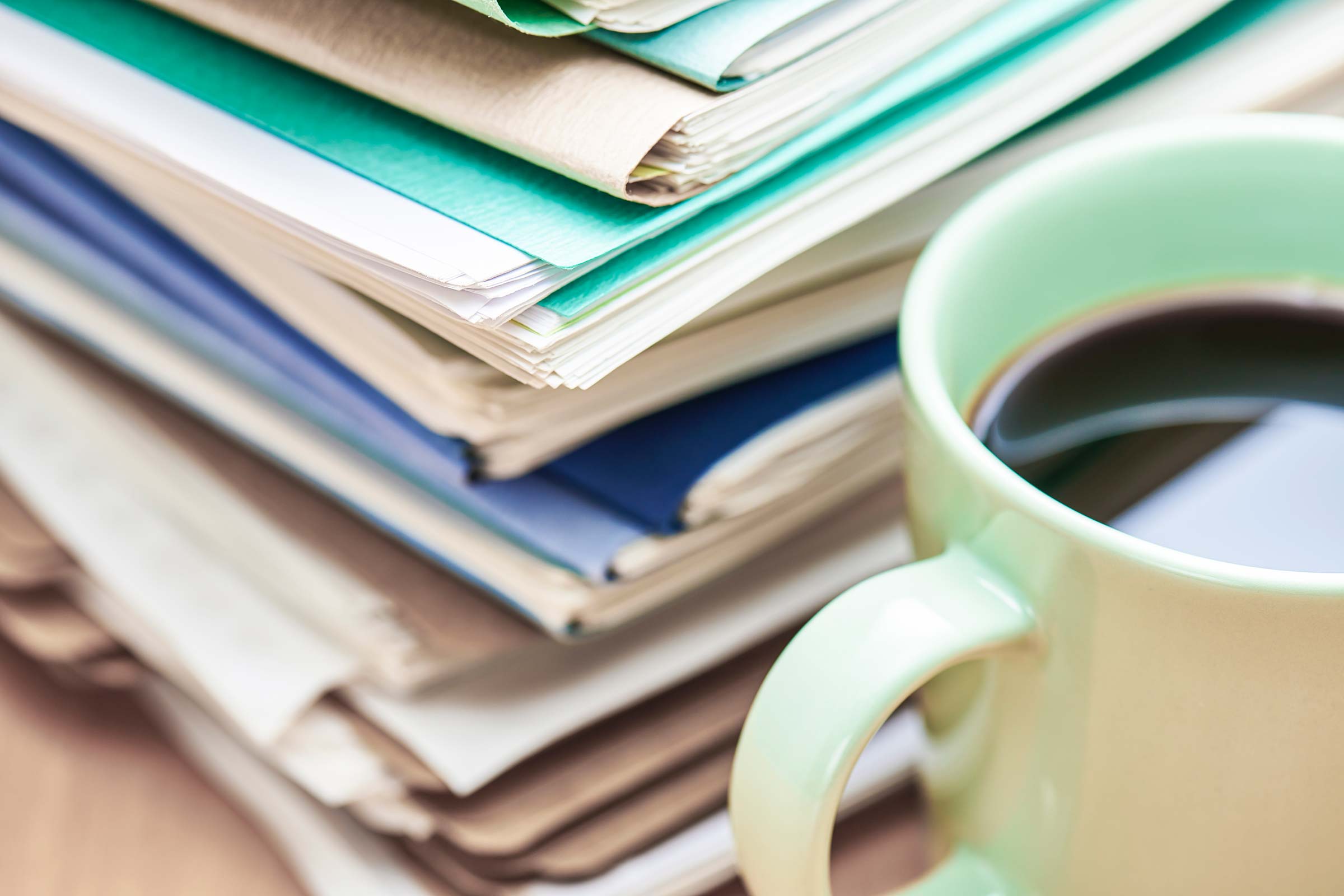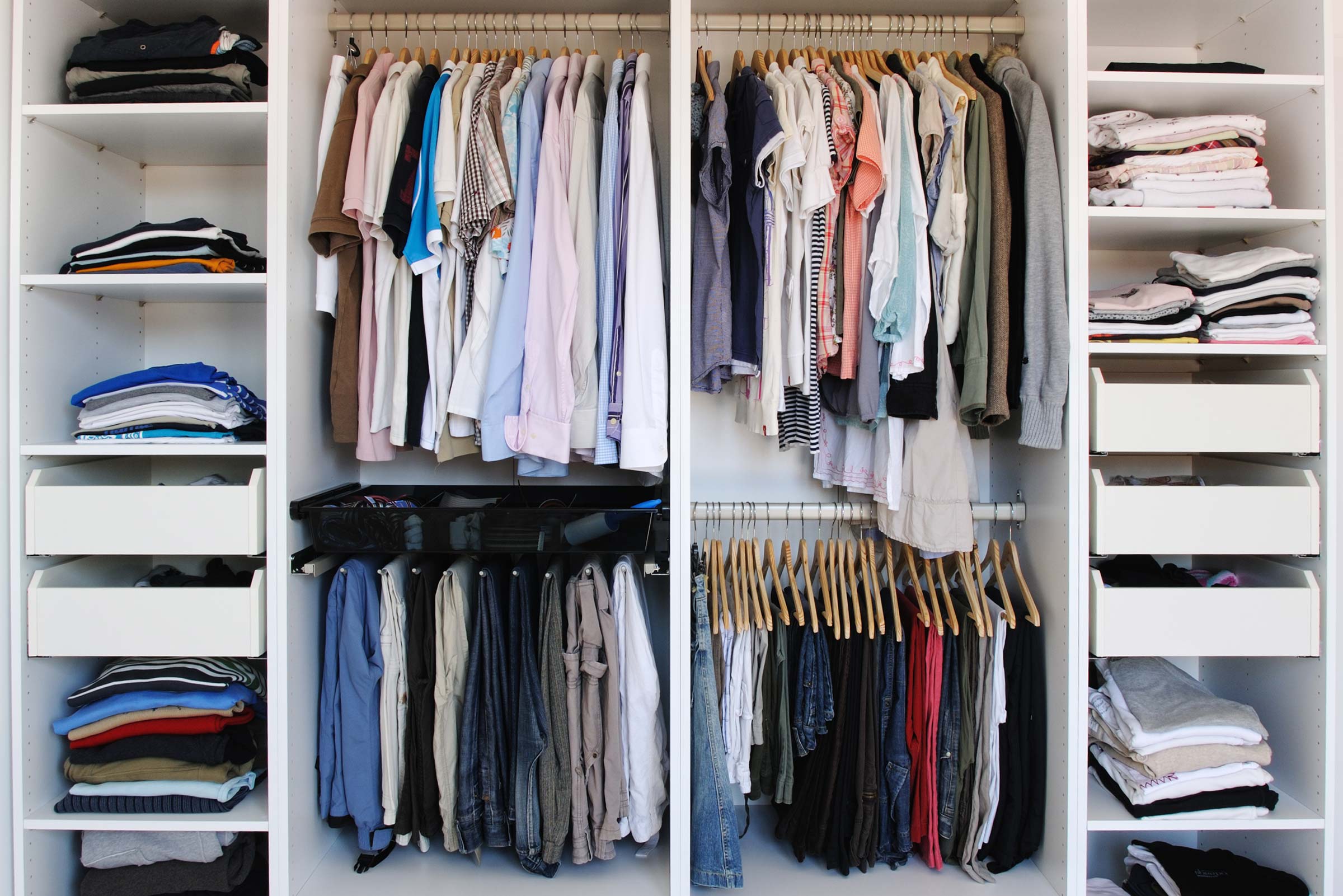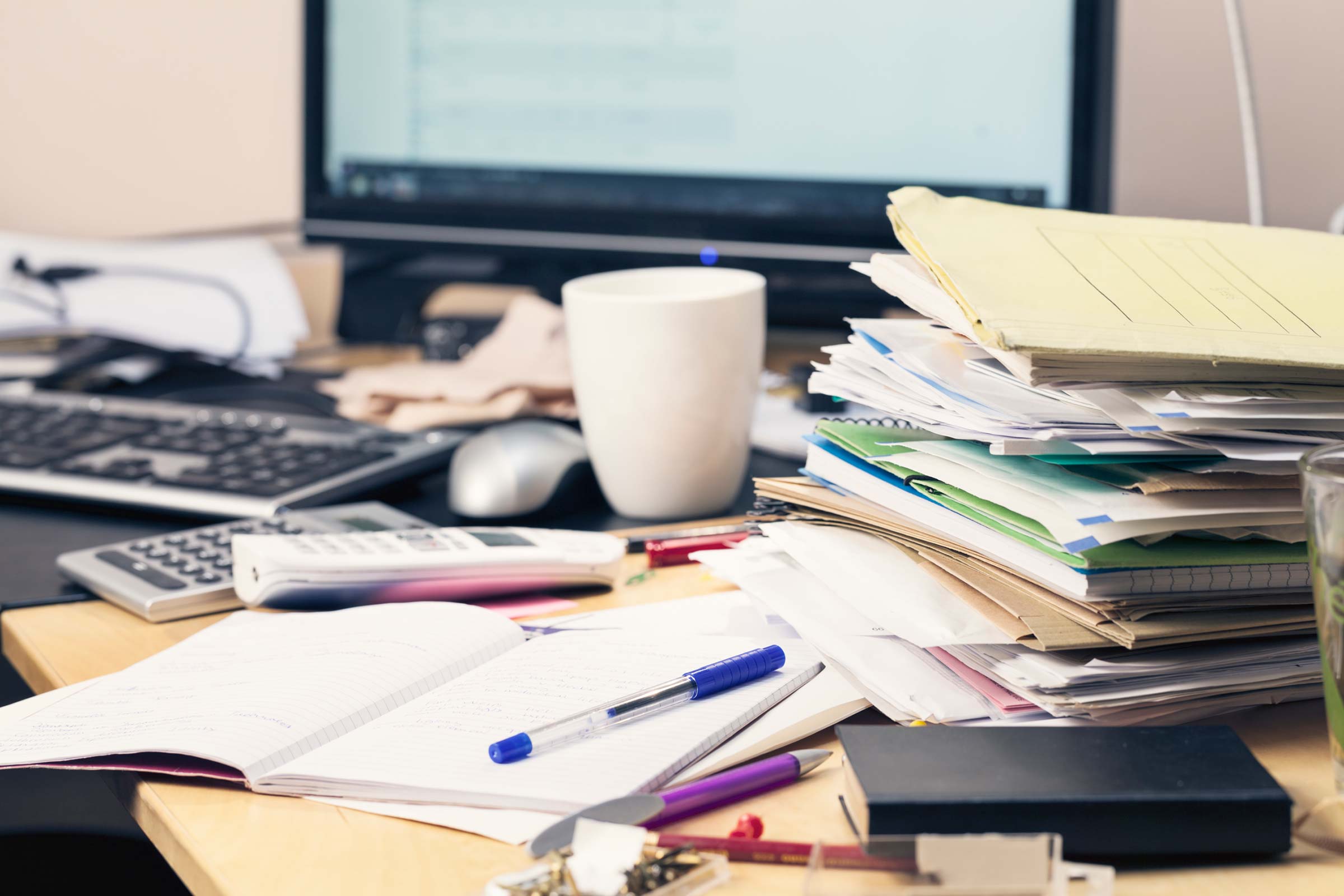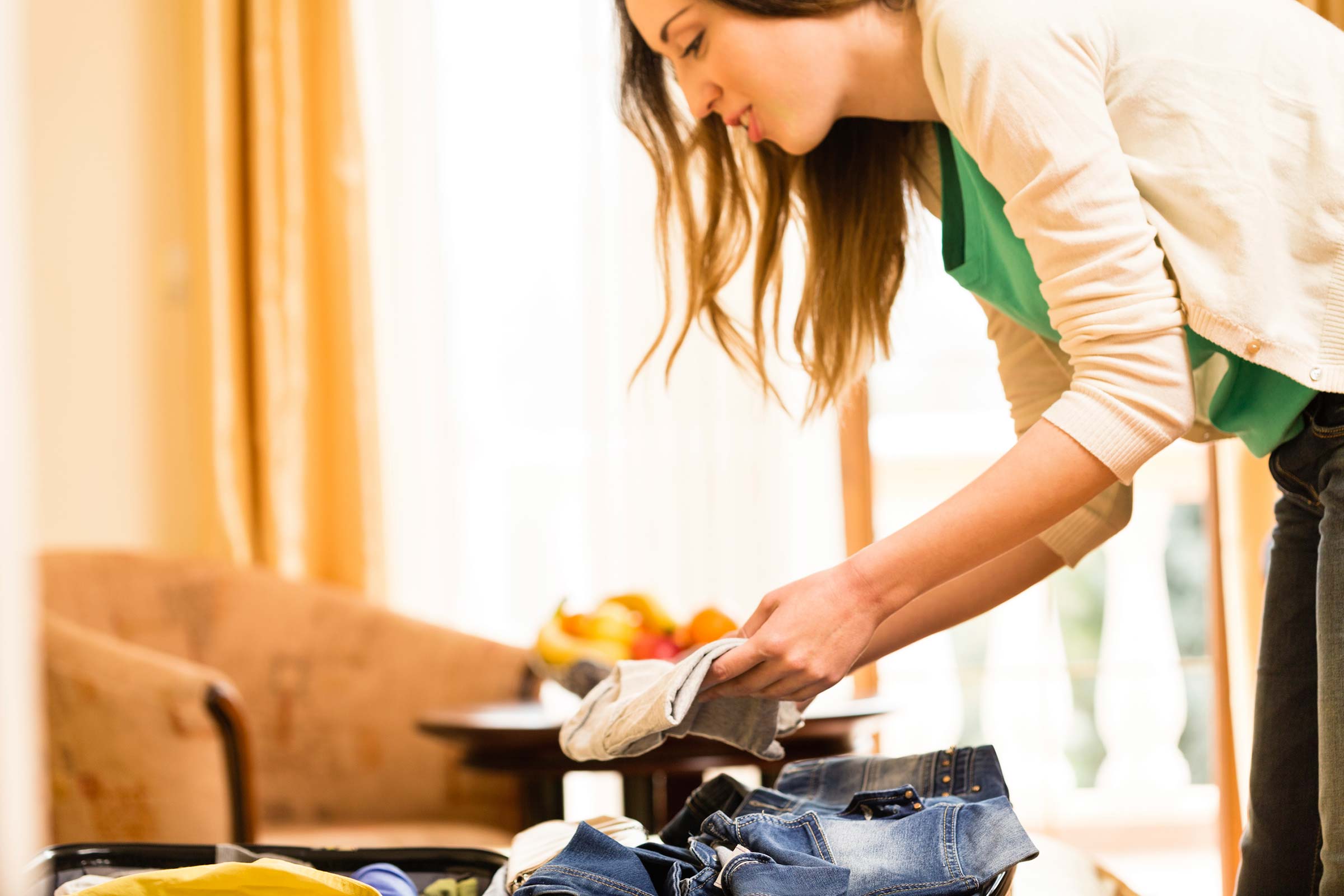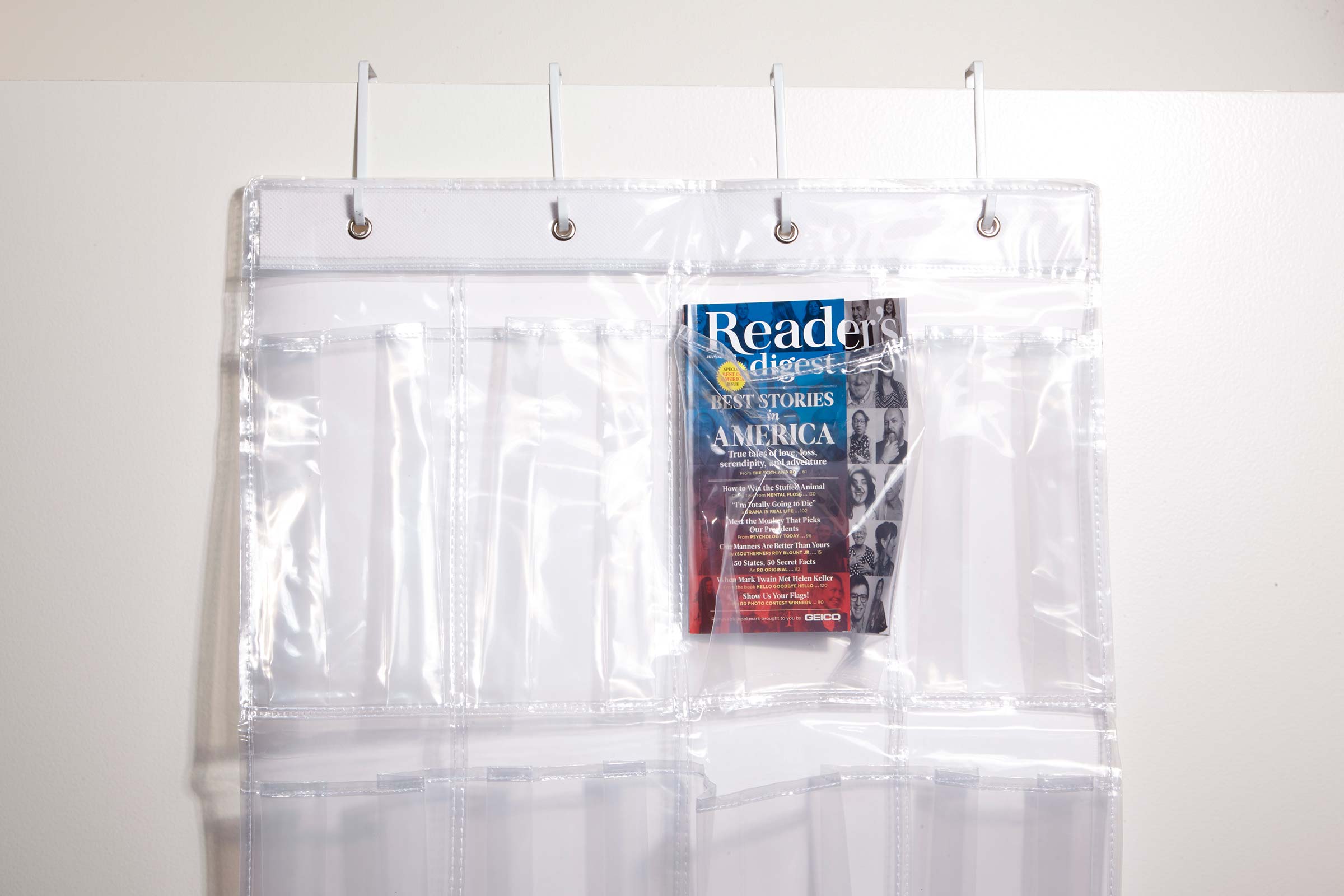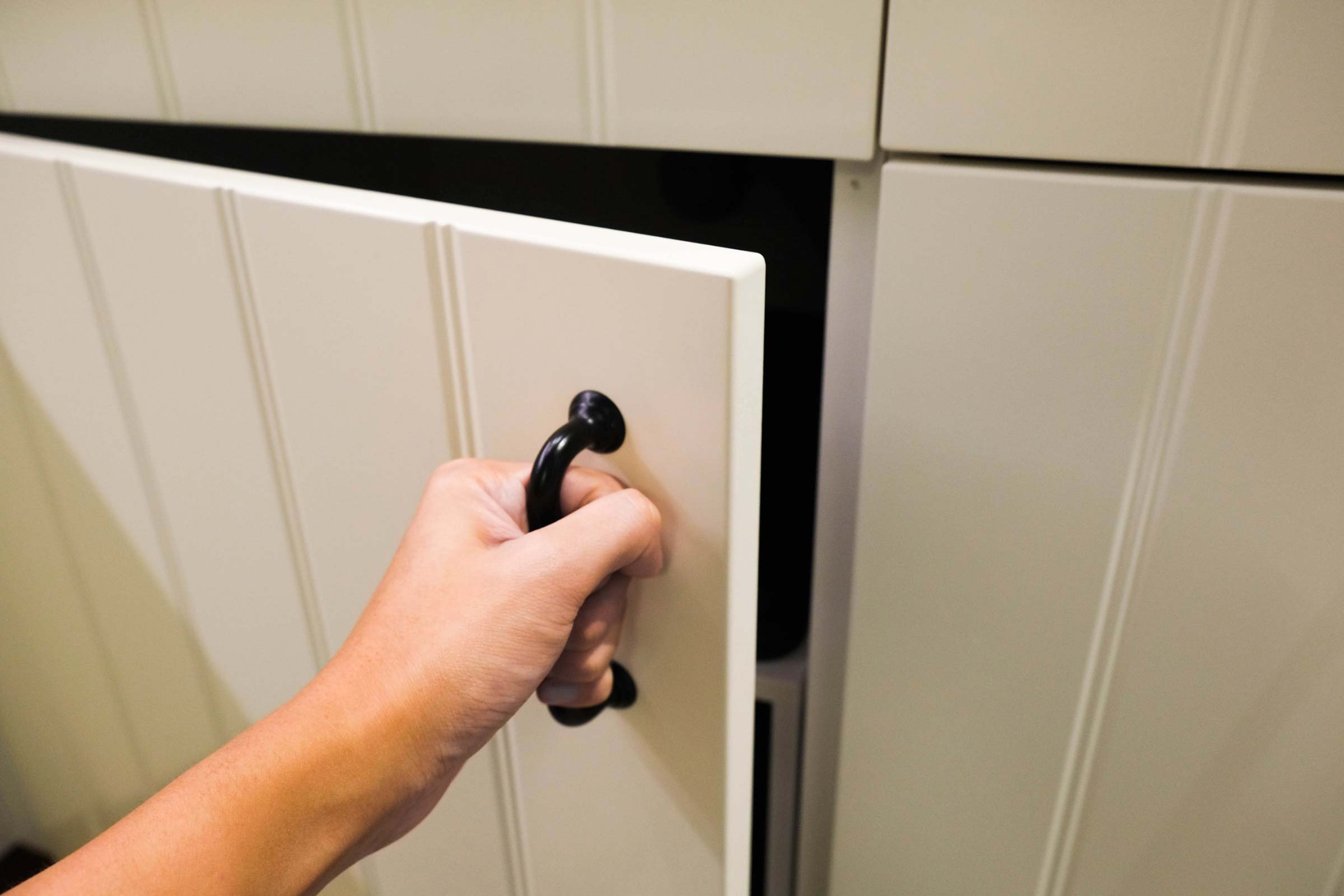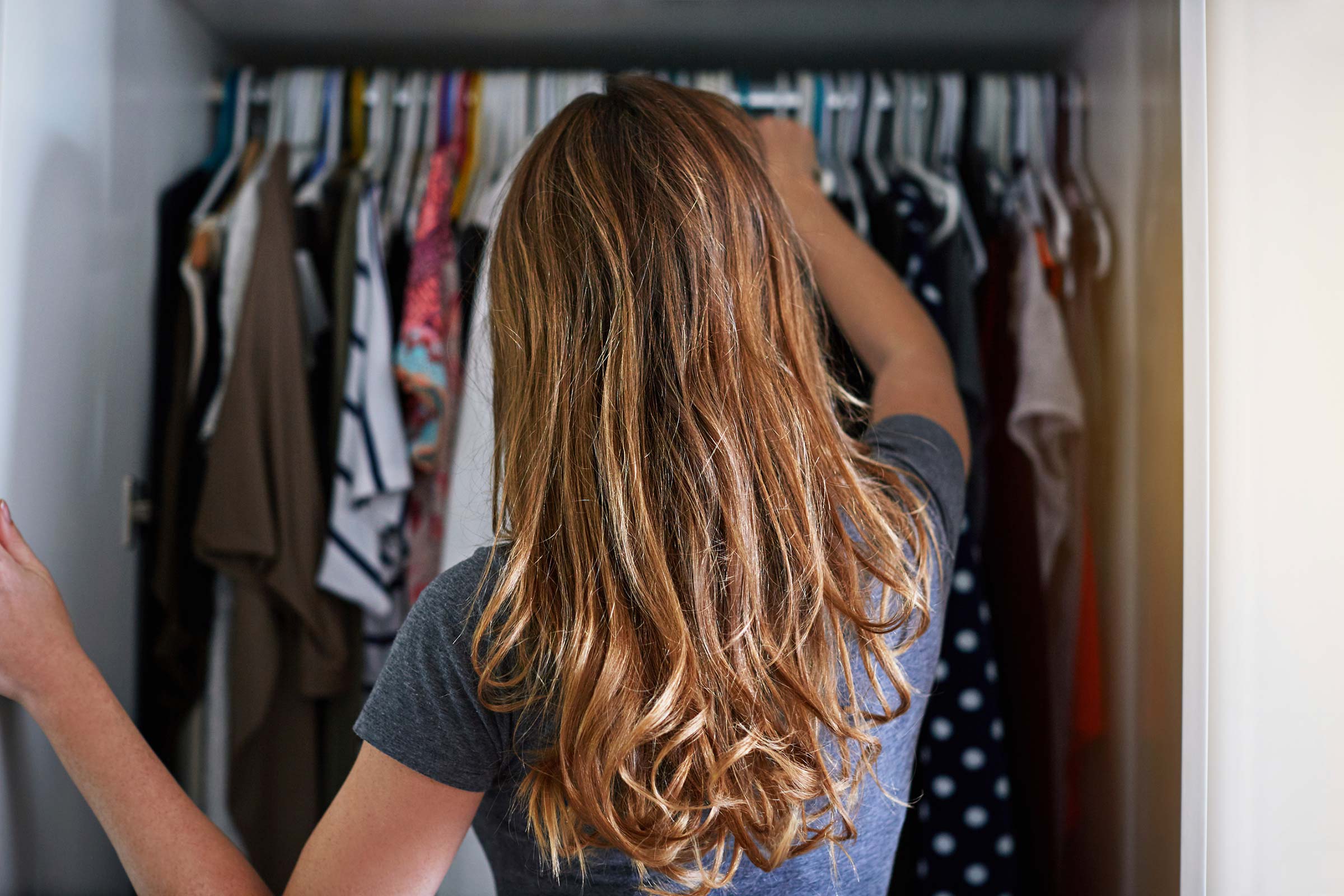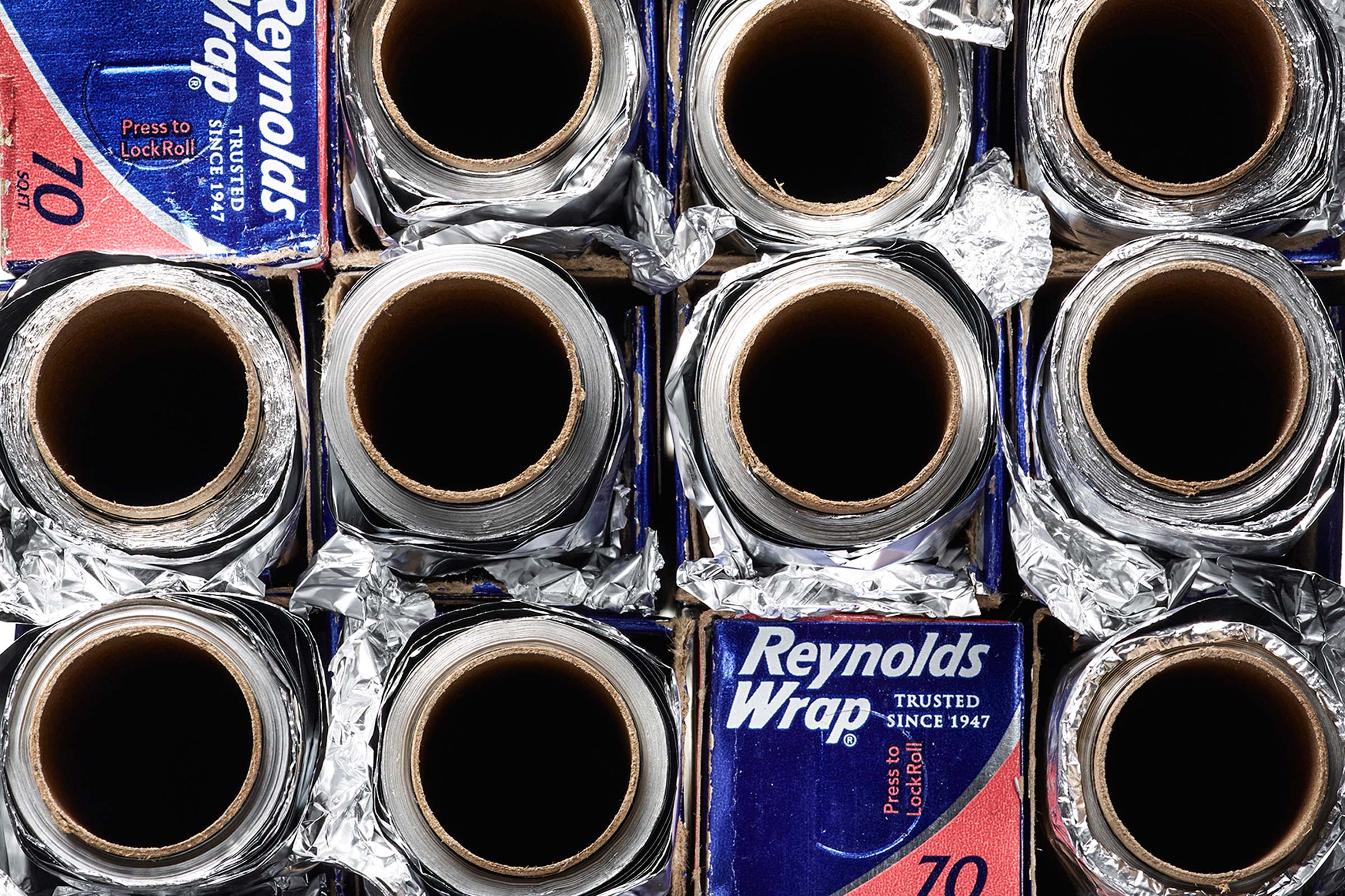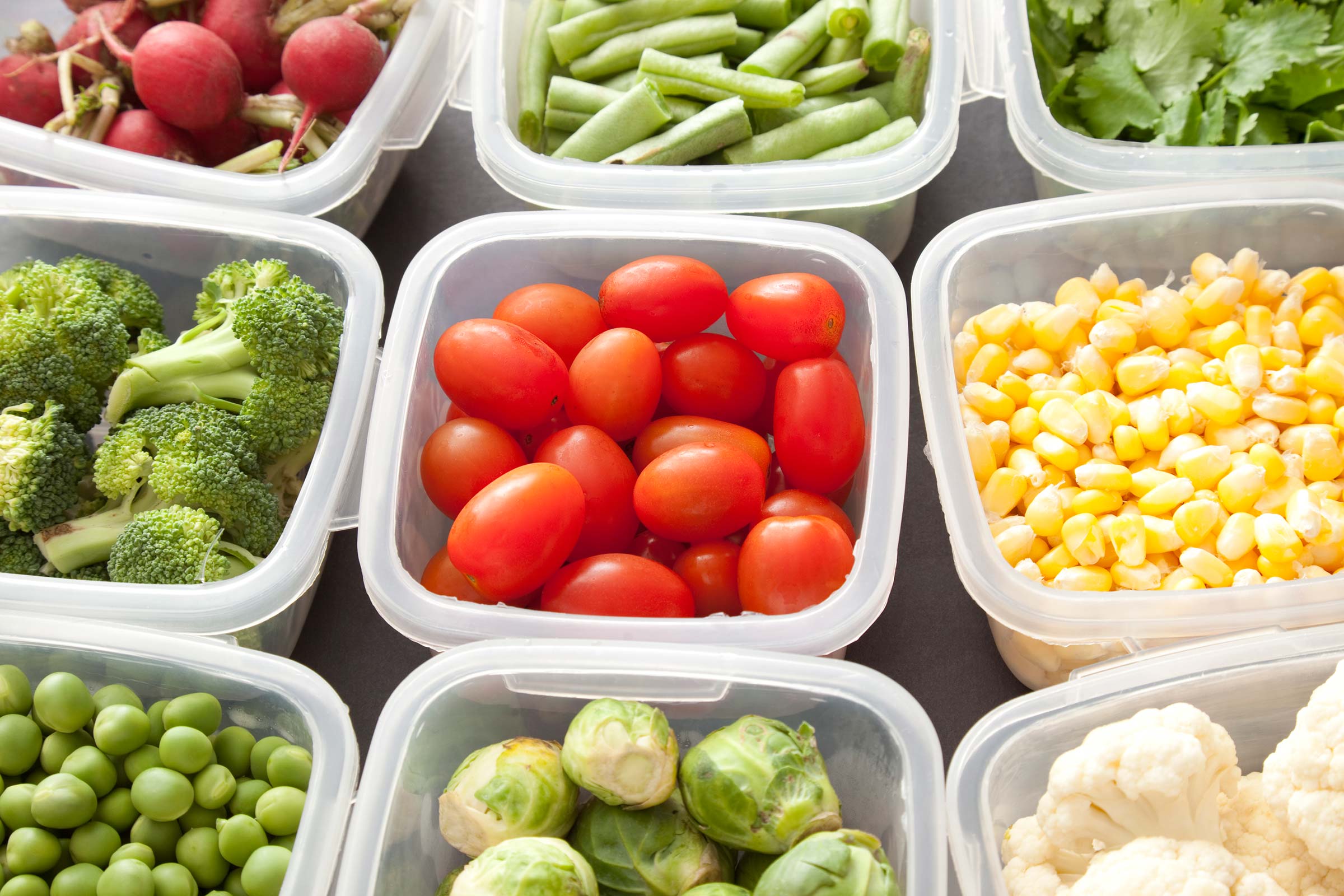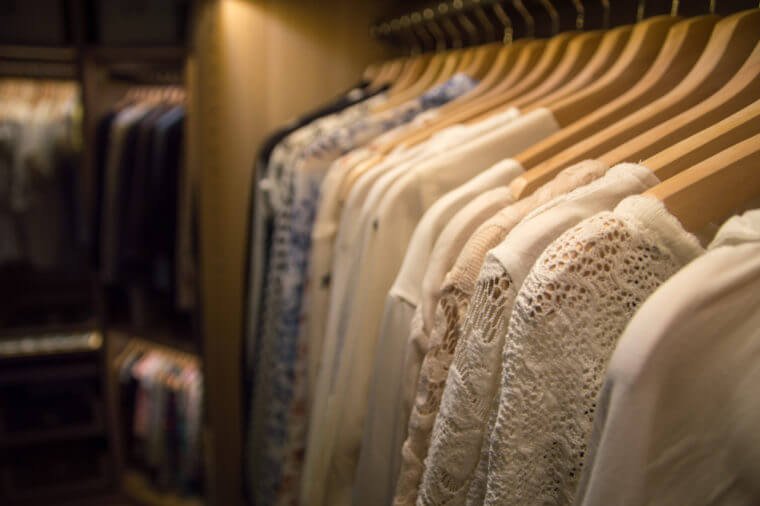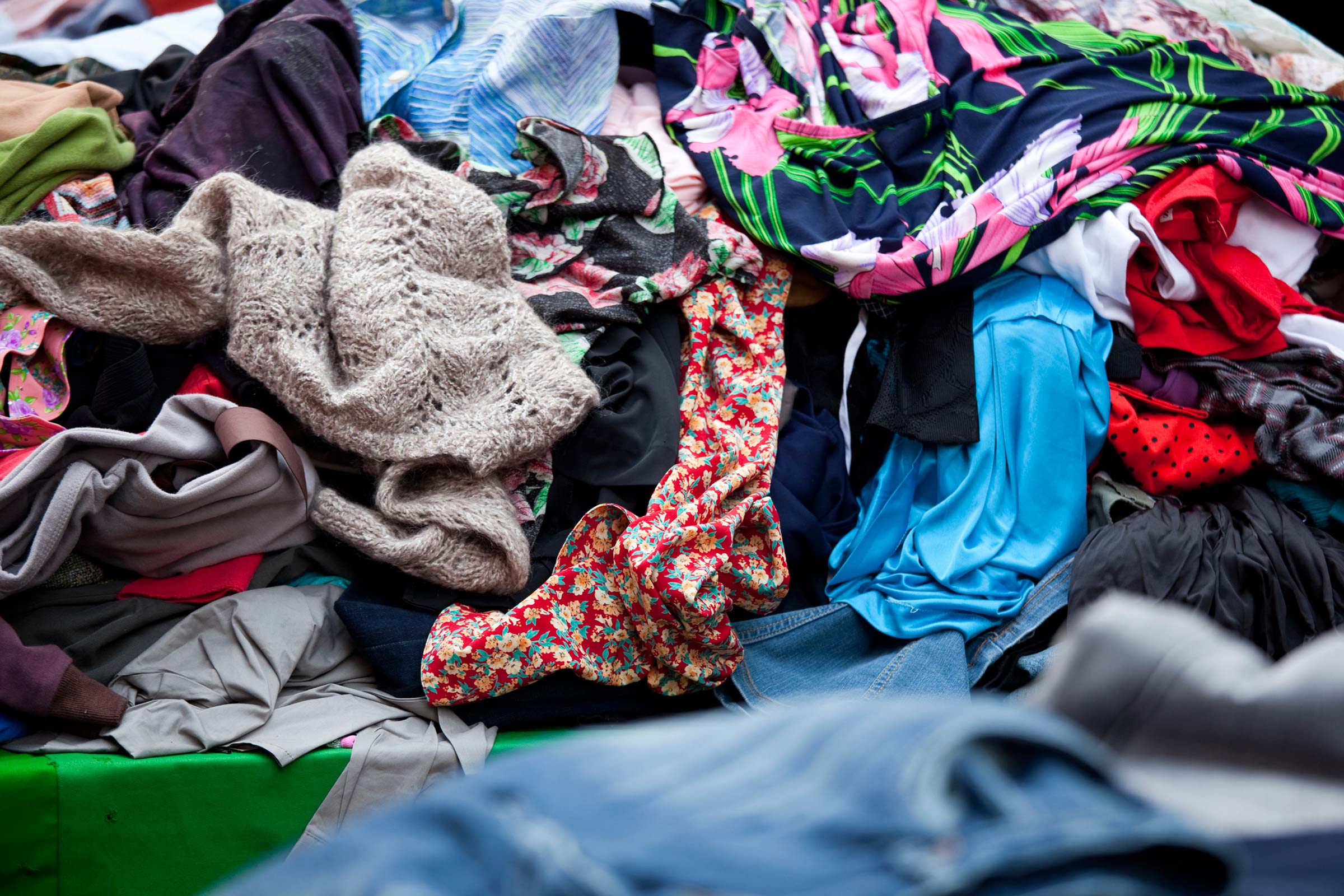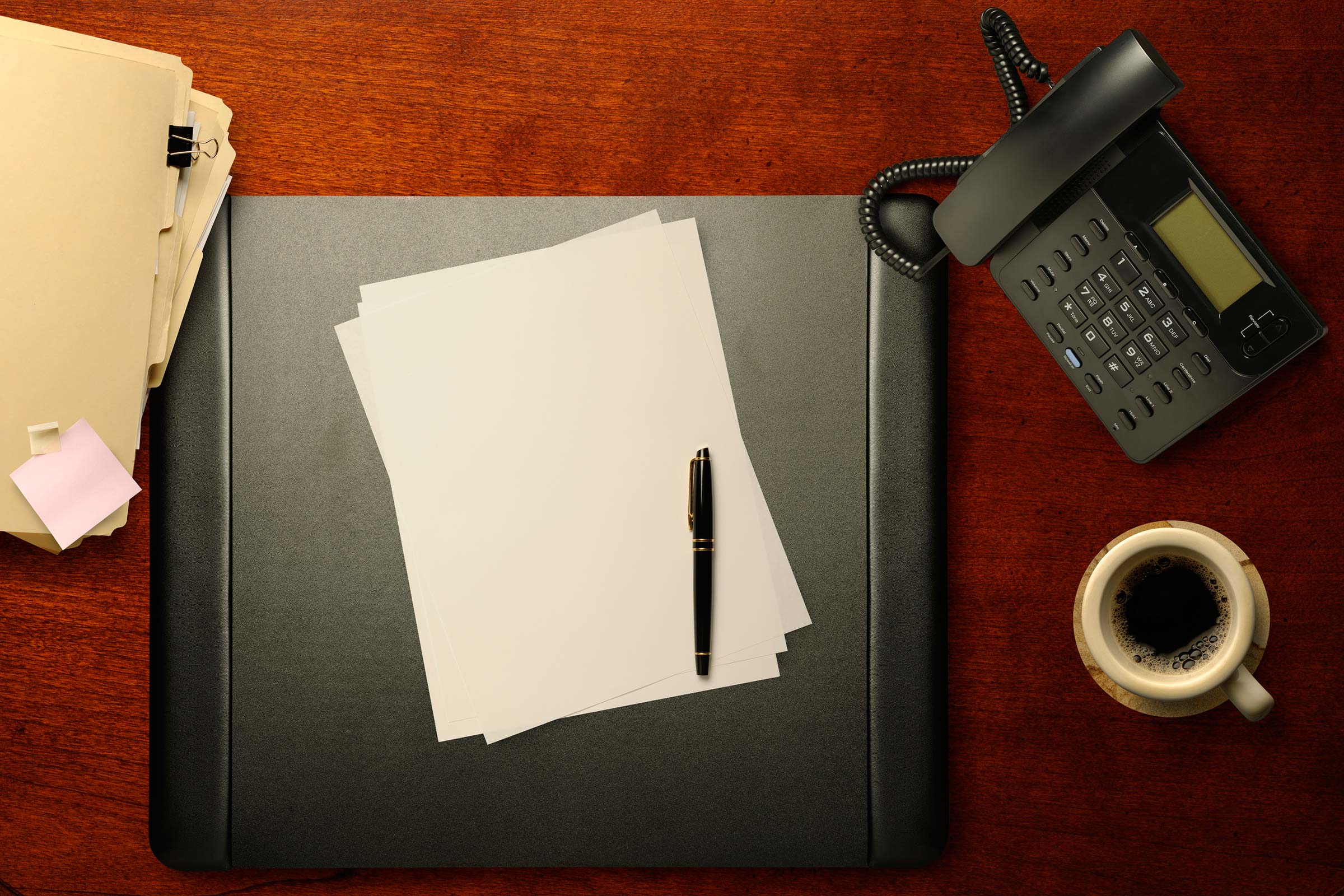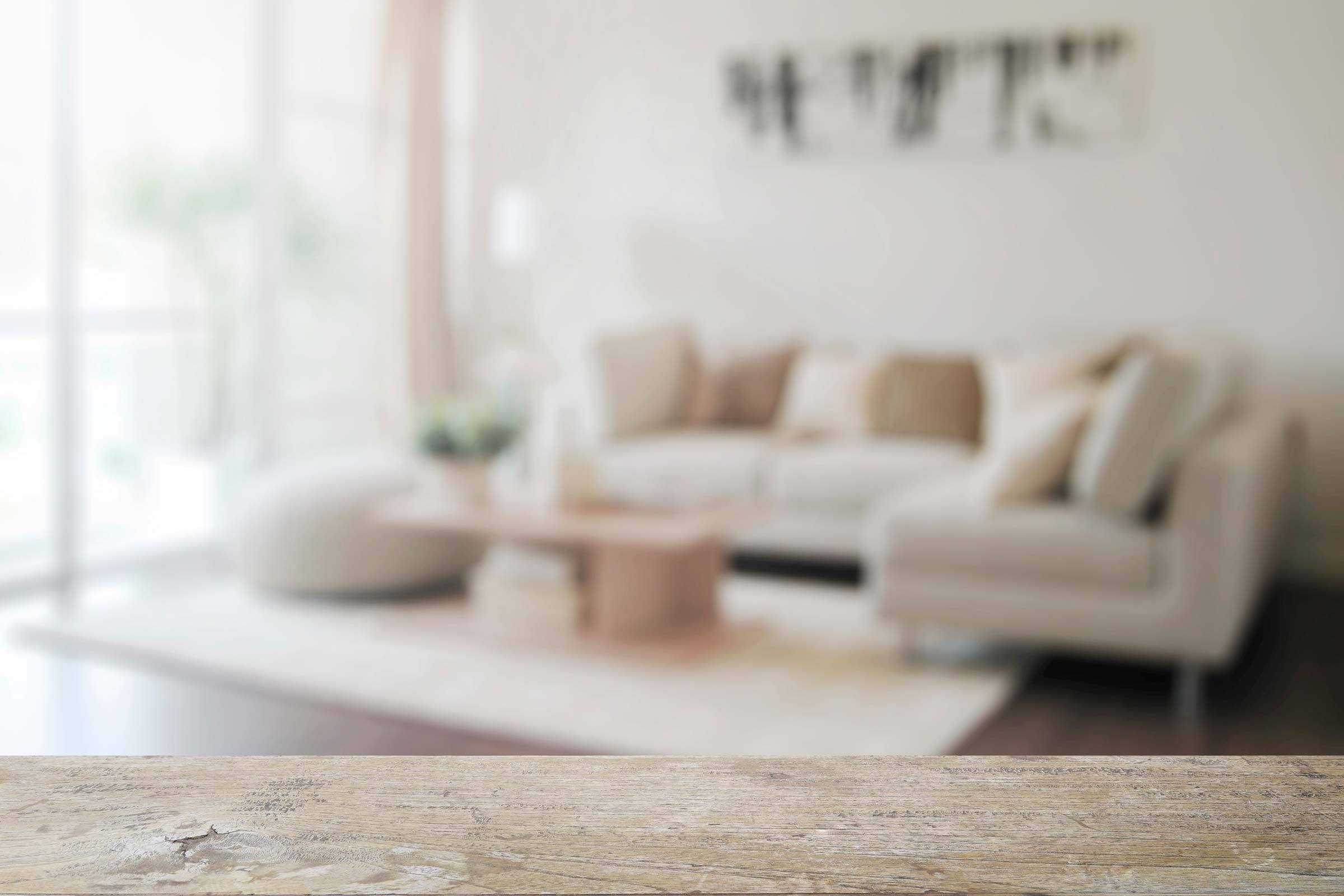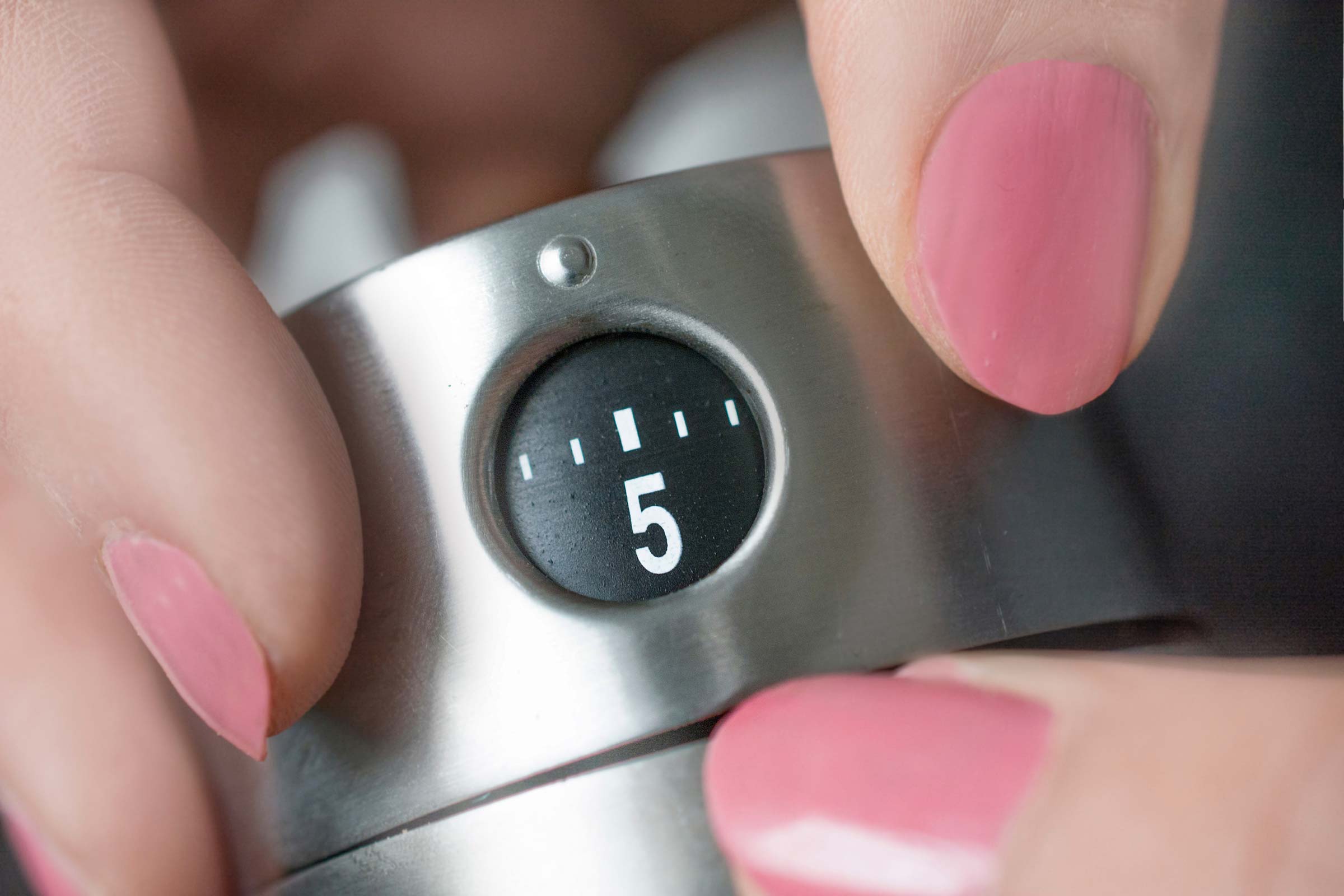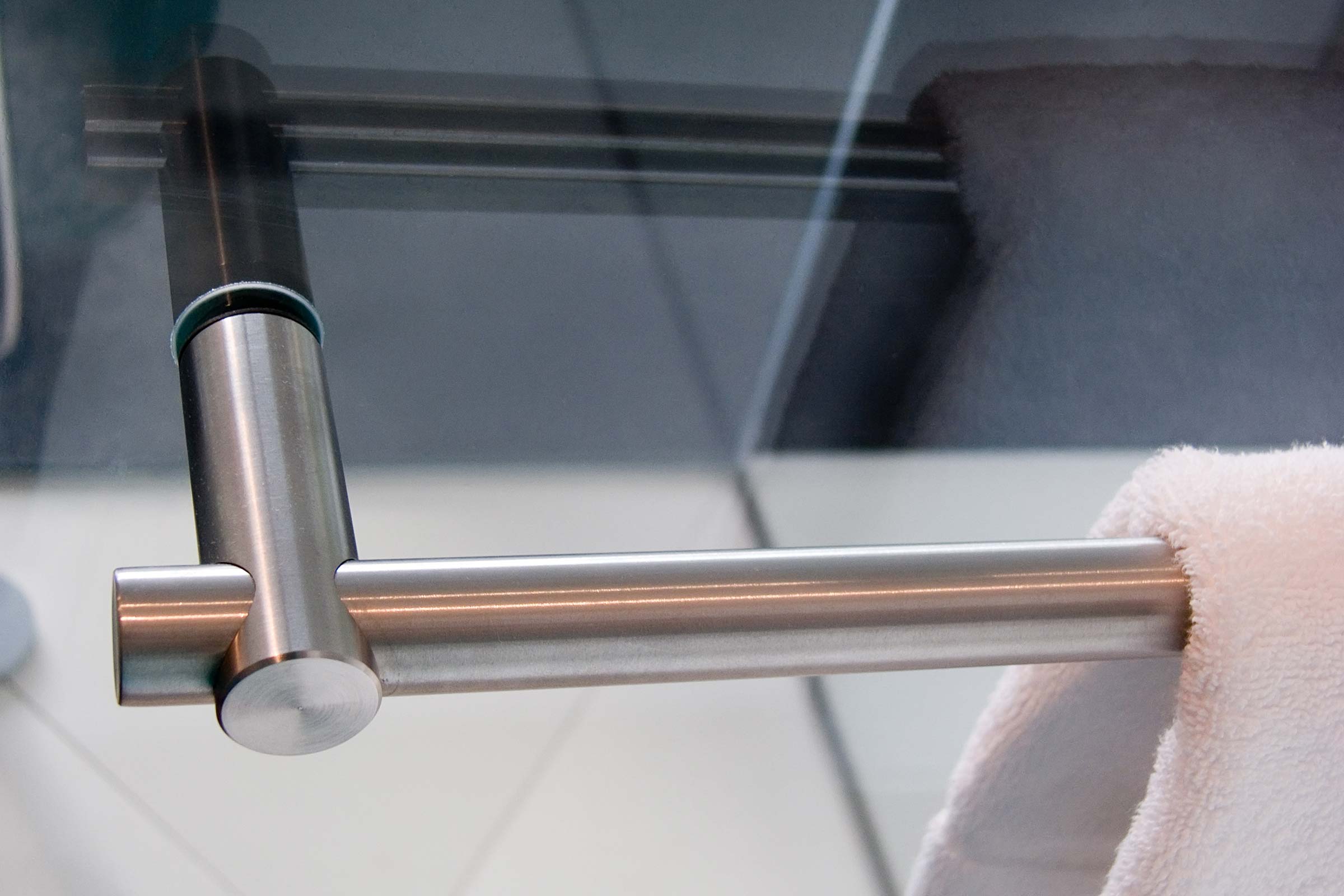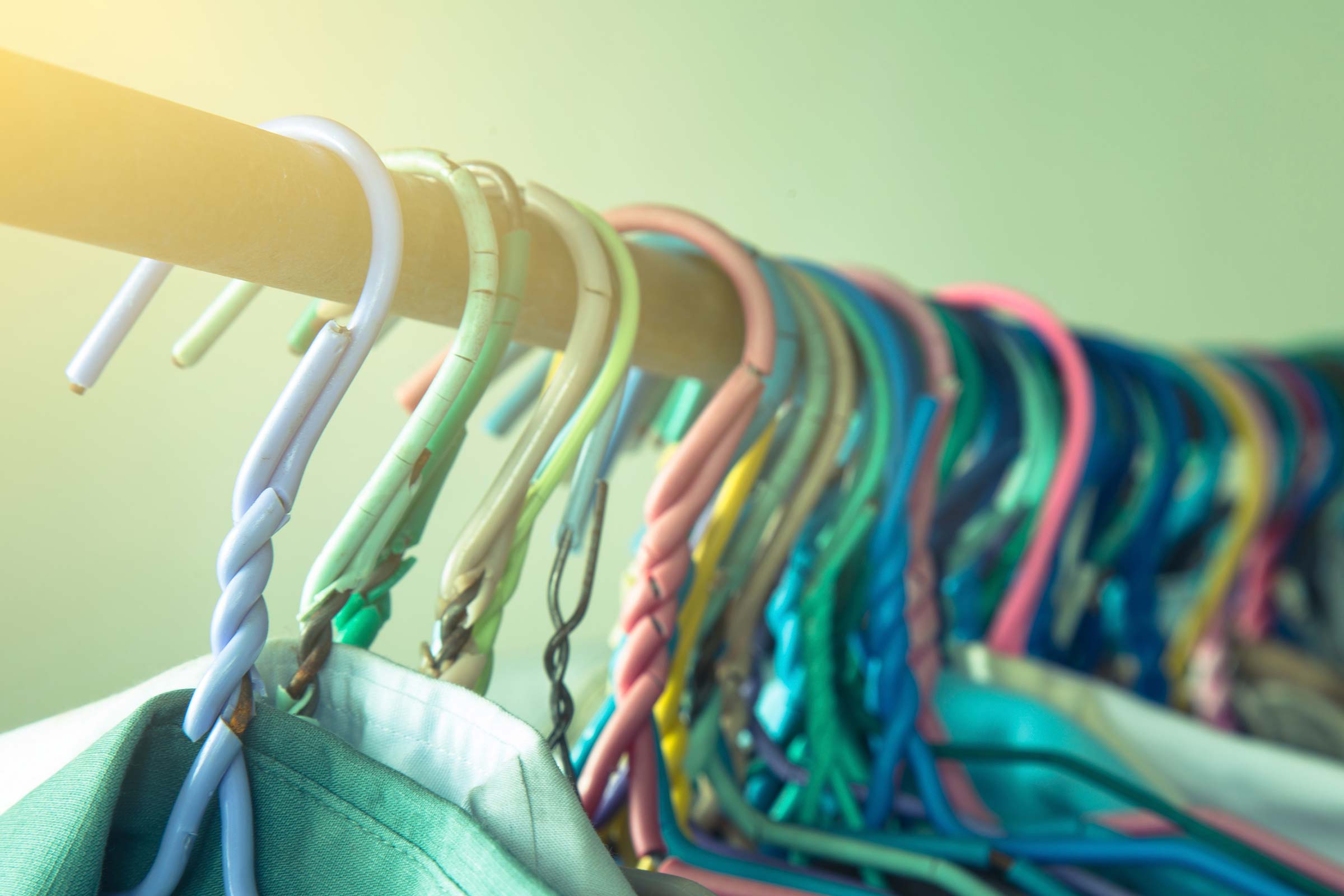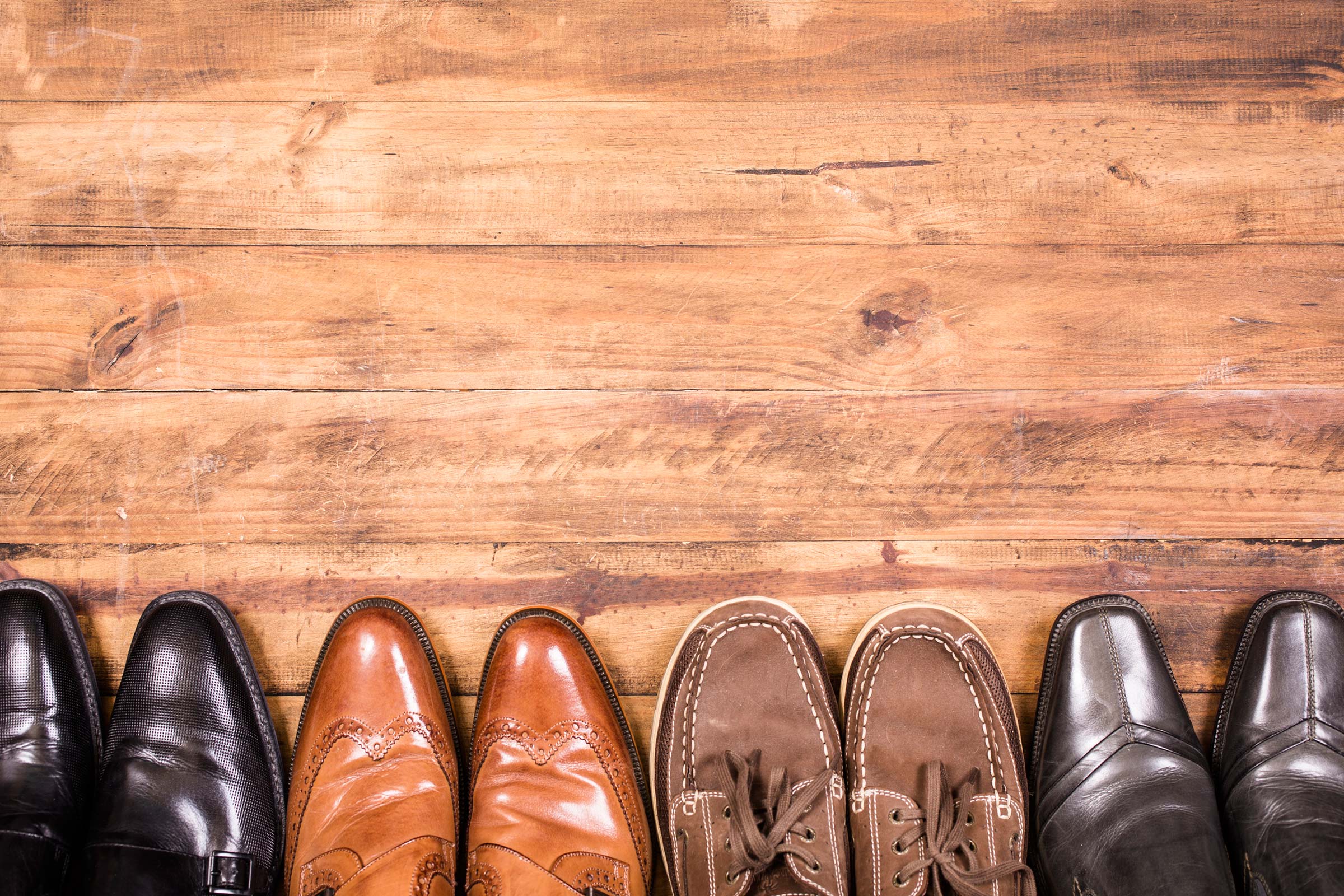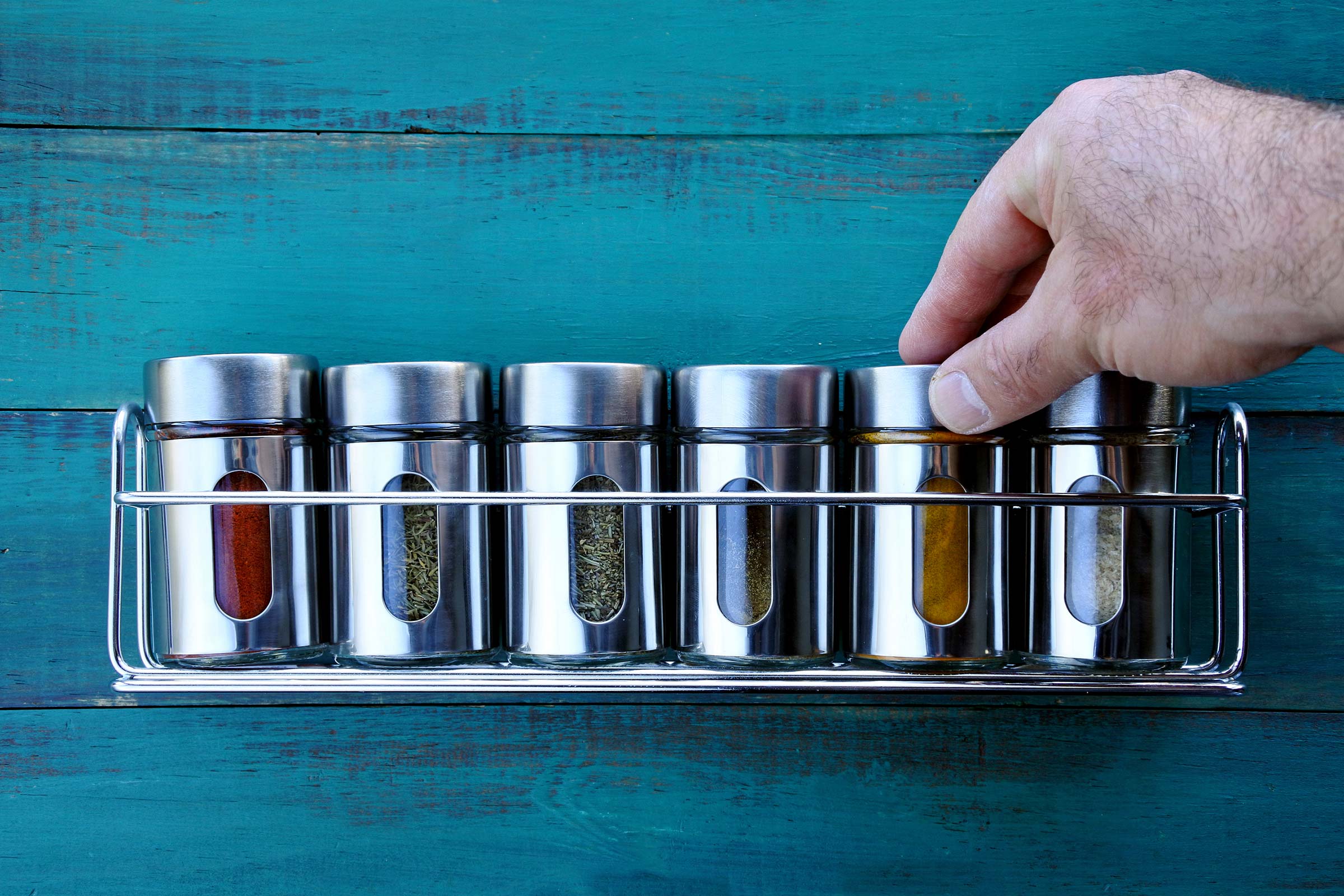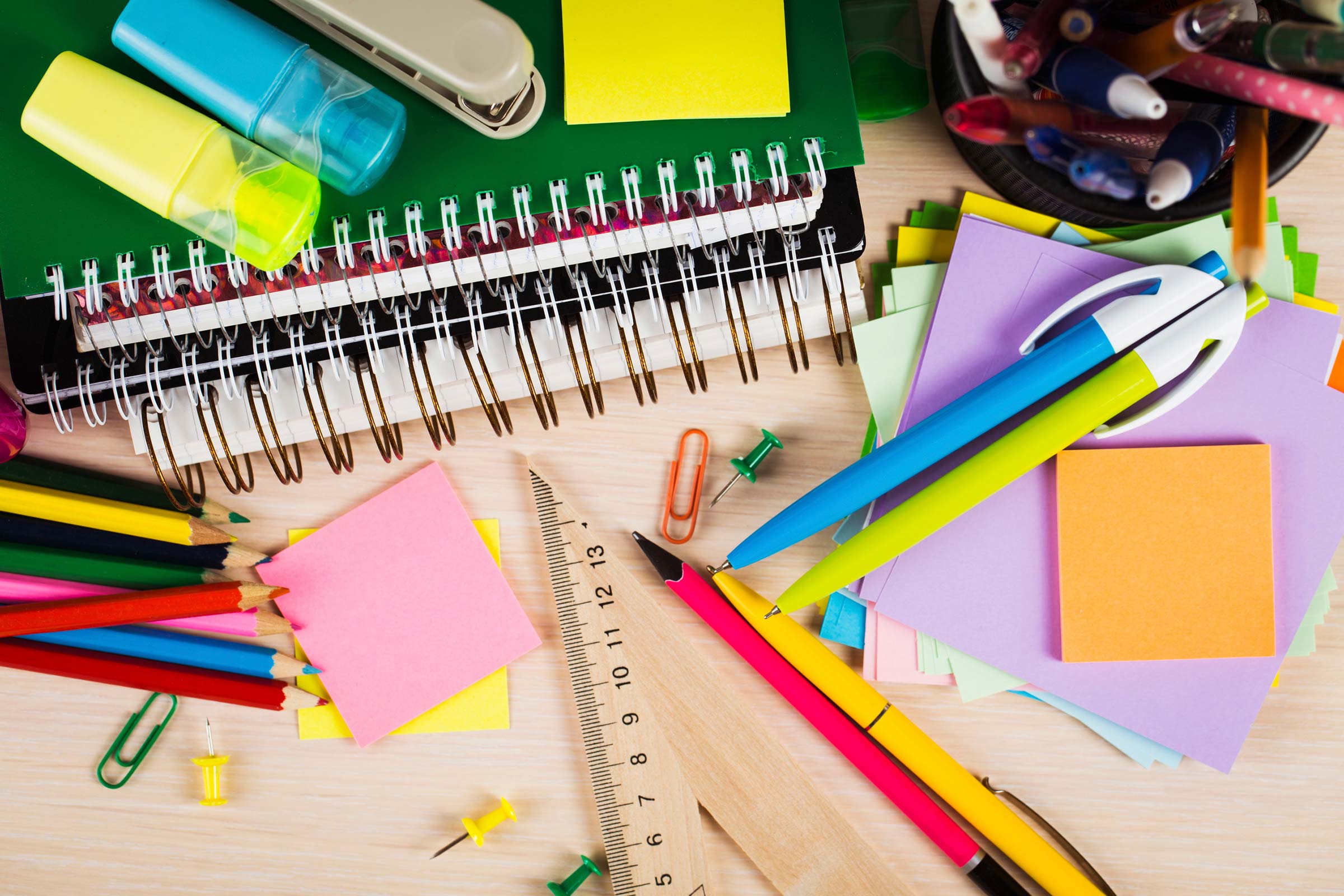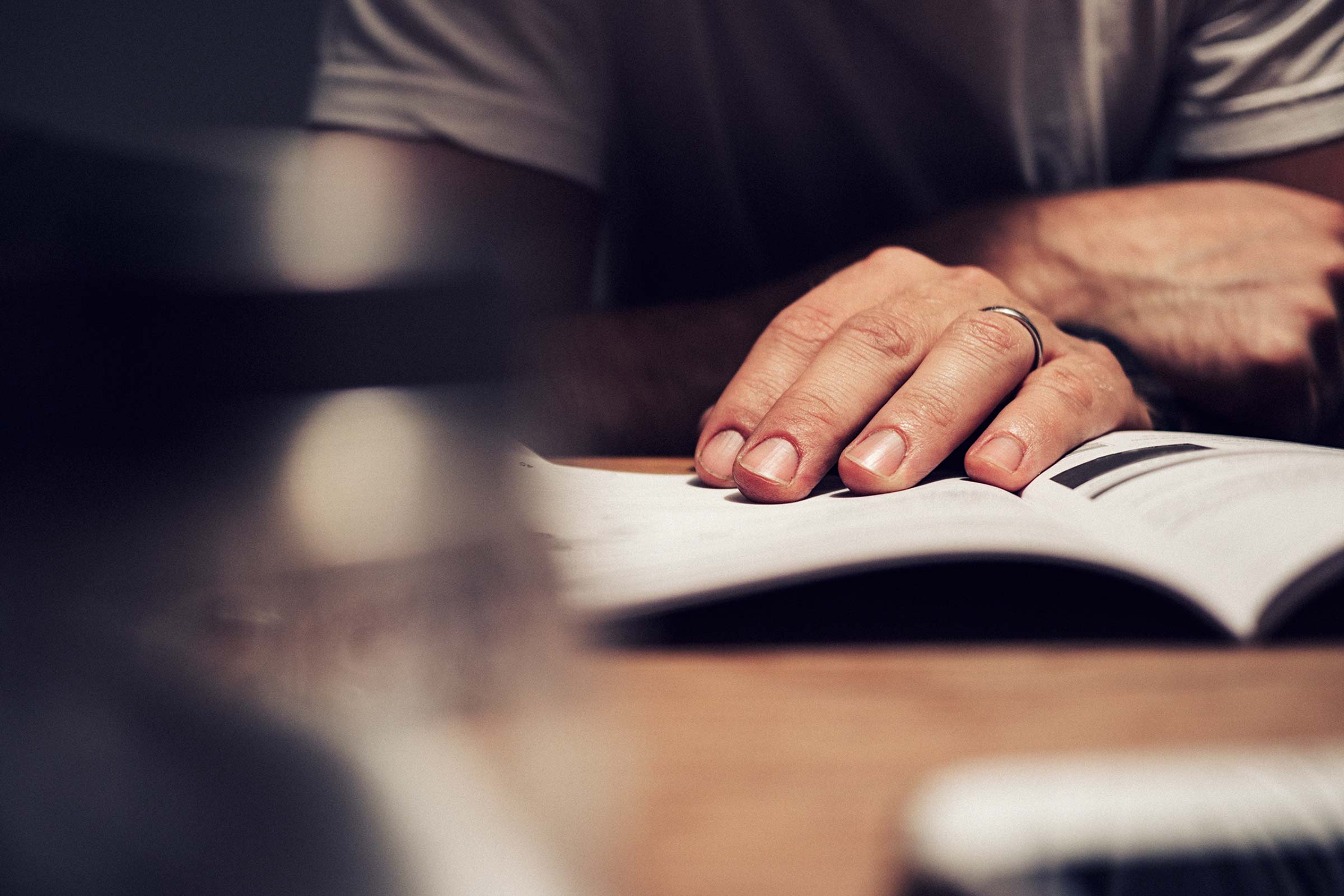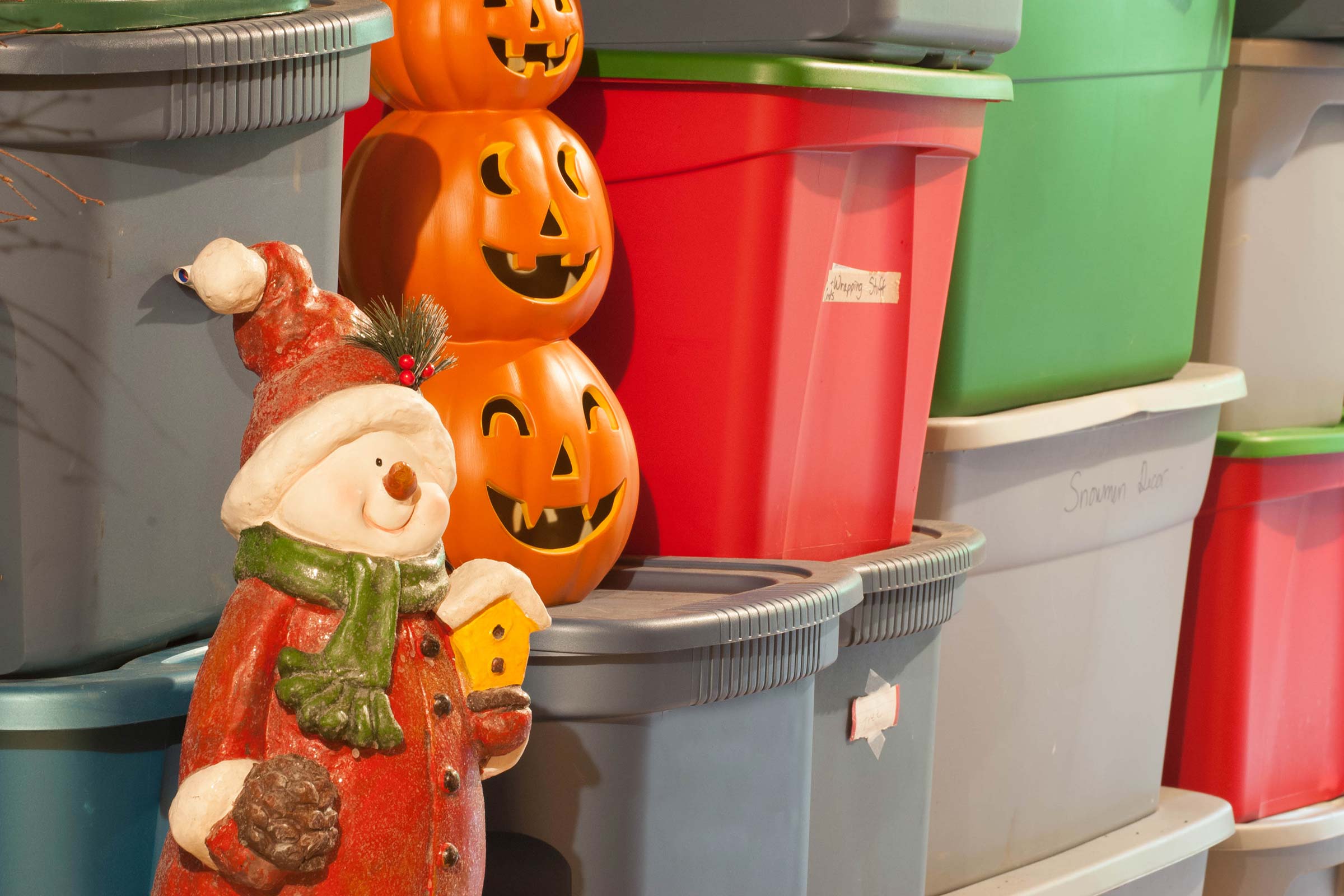You may think you own your stuff—but it actually owns you. Use these easy pro tips to take back control!
Before you can get clutter out, you have stop it from coming in
“The first step to winning the battle against clutter is to control what comes into your home. Unsubscribe from junk mail and catalogs you do not read. Stop shopping in bulk and buying non-necessities. Once the incoming flow of stuff and papers slows down or stops, you can focus on decluttering and organizing what you have.” —Joanna Monahan, chief of external communications for Major Organizers.
Channel Alice in Wonderland with an “Eat Me First!” fridge bin
“Most households generate a lot of food waste, but you can cut it down just by having a dedicated—and labeled!—place in the fridge for leftovers and food that needs to be eaten quickly. This way the food actually gets eaten and you will be aware of what you have to buy soon.” —Lauren Haynes, expert in home organizing and maintenance at Star Domestic Cleaners.
Keep your “ice” on ice
“Ice cube trays placed inside a drawer can really help you store and organize all kinds of little things that can easily get lost. They’re perfect for small pieces of jewelry, paper clips, or craft supplies.” —Lauren Haynes
Kid’s clock and schedule, all in one
“To structure your kid’s daily routine, get a simple white-faced clock and use different markers to color the time segments for each activity like sleeping, bath time, or doing homework. Attach an activity list under the clock and you can keep your kid on schedule and on time.” —Lauren Haynes
See shapes, not things
“If you have group of items that are shaped similarly (i.e. shoes in the bedroom or martini glasses in the kitchen), look at how to fit the shapes together instead of fitting the items. For example, if you are using shoe cubbies, put the shoes toe to heel instead of side by side. This way you can fit a pair of high heels in one cubbie instead of two. You’ll be surprised how much more you can fit in a space when you look at shapes.” —Schae Lewis and Bahar Partow, co-founders of Mission 2 Organize LLC.
Forget the Pinterest projects
“Being organized doesn’t have to be about being super creative or crafty like you often see online. For instance, you have probably seen the ‘trick’ to get 20 mason jars and glue the tops to the underside of a shelf, making cute storage for small items. But that’s a lot of work! And for what? Is that really making your life easier? I always tell my clients to look for the easiest solution to your organizing problems, not the most creative.” —Alissa Dorfman.
Hook a kid up
“When you have kids, always use hooks for their daily use items like coats and backpacks, rather than using hangers. Many kids lack the motor skills to get a coat on a hanger. Make sure the hooks are low to the ground so that the kids can reach them.” —Stacy Erickson Edwards, professional organizer with Home Key Organization.
Ditch dressers
“Instead of a traditional dresser, try a shelf with bins on it instead. This way, clothes don’t always have to be perfectly folded to close a drawer. Bonus: It will be easier for kids to put away their own clothes.” —Stacy Erickson Edwards. Check out these other essential furniture pieces that de-clutter your house.
Skip the shoe rack
“Shoe racks are flimsy and rarely have enough space for all the shoes in a home, so use a bookcase instead.” —Stacy Erickson Edwards. Use these essential rules for what to keep or toss when de-cluttering your closet.
Think art with a purpose
“For extra storage in your living room ask your local liquor store for old wooden wine crates they may be getting rid of. They make attractive, rustic storage pieces and they’re sturdy to boot.” —Nina Ward, professional organizer, designer and regional director at ShelfGenie.
No more quarters behind the washer
“Keep a clear glass jar in your laundry room for holding items found in pockets like coins, receipts, or lipstick instead of leaving them loose (and lost!) on top of your washer.” —Nina Ward
Don’t forget to clear out digital clutter
“Digital clutter can be just as burdensome as physical clutter. To cut down on this, shut off automatic download of messages and start fetching emails only when you’re ready to deal with them. Also, set up a secondary email account for things like newsletters and promotional mail. Use an e-mail sorting system. Take five minutes every so often to clear out your pictures, text messages, music, and other electronic files on a regular basis. Set up a recurring appointment on your phone calendar to remind you.” —Maura Thomas, founder ofregainyourtime.com and author of Personal Productivity Secrets.
Have an electronics hub in every room
“Have a place for all your mobile electronics, like iPads and phones, in every room you spend time in, not just in the kitchen or office. Since electronic items tend to move from room to room, having just one place in the home to store them doesn’t really work. Make the storage method fit each room. For instance, round baskets or an ottoman with storage can sit on the floor next to couches; decorative bowls or boxes function well on table tops; and magazine holders work in a tight space. Keep each station stocked with the necessities like different chargers, remotes, and earphones.” —Jeffrey Welder
Play the matching game
“Start small, with one room or even just one drawer. Then empty everything out of the space and sort it into categories, grouping like items together. Once you see how much of each type of thing that you have, it will be easier to get rid of duplicates.” —Joanna Monahan.
Use a zone defense against clutter
“Designate one place in your home, called a zone, for each category of items. For instance have only one place for office supplies, one place for sports equipment, one place for shoes and so forth. Clearly label each zone to help you and your family know where to look for and to return items to their proper homes.” —Joanna Monahan
Pick one of four destinations
“It isn’t enough to pull out all the stuff you just don’t need. Purge it from your home by either trashing it, recycling it, thrifting it, or consigning it. This will help you become more mindful about what you really need.” —Evan Zislis, professional organizer and author of ClutterFree Revolution: Simplify Your Stuff, Organize Your Life & Save the World.
Your stuff should support your life goals, not the other way around
“You need to clarify what is really important to you. Then organize the stuff that supports who you want to be and what you want to do before you’re dead and gone.” —Evan Zislis
Freebies aren’t free
“Just say no to free pads of paper, branded items, and other things you pick up at conferences, schools, or store events. Those items usually result in unused clutter around your house. Also say no to buy-one-get-one-free deals and bargains at the store too. Really, when are you ever going to use up six boxes of staples? And storing them isn’t free.” —Sara Skillen.
Your refrigerator is your biggest cupboard
“The refrigerator is one of the most frequently used ‘cupboards’ in the home, yet it is often forgotten when it comes to getting organized. Eliminate ‘lost’ food in the back by placing a lazy Susan at the rear of shelves to make rear spaces more functional and the items stored there, such as condiments, more accessible and usable. In addition, store food in clear glass standardized storage containers. When you can see the food, you are more likely to eat it.” —Debra Baida, owner of Liberated Spaces in San Francisco
Proximity = Urgency
“Only things that you need or use regularly should be kept close. Where items should go is based on how urgently they’re likely to be needed. Example: Don’t put your bear spray at the bottom of your pack when hiking in bear country. Or don’t put your purse in your closet when you know you’ll need it as you’re rushing out the door.” —Evan Zislis
Make storage fun
“For long-term results, design spaces with style and vibrancy, flexibility, and function. This will give you the inspiration you’ll need to maintain your newly organized systems. In other words, make it fun and pretty!” —Evan Zislis. Try these other effortless tricks for staying organized.
Start organizing your kitchen with the pantry
“How many times have you gone to the store and wondered if you had pasta at home in your pantry? You’re not sure, so you buy another box, only to get home and find you have 20 already. To avoid this dilemma, pull everything out of your pantry and trash it if it’s expired. Donate unopened items you don’t like to a food bank. Then put your stuff back in but label your shelves with a name under each item. Only put foods on their designated shelf and you will never have to wonder how much pasta you really have.” —Alissa Dorfman, personal organizer and owner of Alissa Dorfman Home Organizing
Start organizing your bedroom with the dresser
“If you have an overflowing drawer, consider expanding it to two drawers, until every drawer can close. Next, narrow down how many types of things are in the same drawer. Only bras and underwear should have to share space. Lastly, move out of season or excess items into under-bed storage. —Alissa Dorfman.
Organize toys by age
“How old are your kids? Do their toys reflect that? As kids grow, their toys change shape. In the beginning, everything is big and chunky with fewer pieces. A few years down the road, everything is teeny and collectible and kills if you step on it. Your playroom should reflect the ages of your kids and have different ways of organizing the distinctly different toys. Use bins and Ziplock bags for all the little pieces, labeled so kids know which is for which. Communal areas, like dress-up and kitchen should have big bins so cleanup is easier. Puzzles and board games should have a shelf, but make sure they too are separated by age, so each kid knows which area has their age appropriate toys. Encourage taking out one thing at a time and remind them 10 minutes before a playtime ends to clean up. You may have to help at first, but once your children know where every toy belongs, they are more than capable of cleaning up on their own.” —Alissa Dorfman
Give in to the piles
“For people who chronically pile papers instead of filing them, ditch your filing cabinet. Instead keep your piles but make them a little more structured by putting them into clear bins and then labeling them by category. It’s best if bins are transparent—either wire or acrylic—because if you’re a piler then you also probably have a visual memory. Labeling helps other people interact with your piling system.” —Kelly McMenamin and Katie McMenamin, co-authors of Organize Your Way: Simple Strategies for Every Personality, and co-creators of PixiesDidIt!
Hang everything
“Consider hanging almost all of your clothes. (You can use a double hanger to increase hanging space.) This helps you see everything you have so you know exactly what’s there and what you need. Drawers should be reserved for socks and underwear only.” —Kelly McMenamin and Katie McMenamin. Find out how a capsule wardrobe can keep you organized for good.
Don’t underestimate how draining clutter can be
“Being surrounded by a lot of stuff can wear you down, physically and emotionally. Your home should be a reflection of items that truly hold meaning for you—either because you really like them or because there’s a special memory attached to them. Don’t hang onto unused picture frames, knick-knacks, plates, bowls, vases, and other items you don’t have out on display or use. And remember, just because it’s hidden in a closet doesn’t mean it won’t add to that overwhelmed feeling you have as you still have to take care of it.” —Jeffrey Welder of Vänt WallPanels.
Note how your taste changes
“Just because you loved something once doesn’t mean you still have to love it 10 years later. Times change, people change, and trends change, and there’s nothing wrong with letting things go that no longer make you happy.” —Jeffrey Welder
Over-the-door shoe organizers aren’t just for shoes
“Hanging shoe organizers are a handy tool to keep clutter off floors and shelves, with uses for every room of your house. Try hanging one in your laundry room to organize all of your cleaning supplies. Or put one on your pantry door as the pouches are the perfect size to organize small boxes and gravy packets. Hang one in your bathroom to organize makeup and other toiletries. Use one in the playroom to leep Legos, matchbox cars, stuffed animals, and other small toys off the floor and in plain sight. Or try one in your workroom to keep all of your craft and wrapping supplies together.” —Jeffrey Welder.
Use the empty spaces above too
Under cabinets often end up packed to the gills (and hard to use) or half full of dead space. A simple solution is to use half shelves or stackable containers to use as much of the vertical area as you can.” —Schae Lewis and Bahar Partow
Make it a game
“Our clients love the ’12-12-12 challenge.’ Each week set a time to find 12 items to throw away, 12 items to donate, and 12 items to be returned to their proper home. It takes just a few minutes and is a fun, easy way to quickly organize 36 things in your house.” —Alison Bradley of the London Cleaning Team
Throw a swap party
“If you want to declutter without being wasteful, throw a party and invite friends to bring unused or unwanted items to swap. Everyone gets to go home with something new, and if you end up with leftovers, donate them to a local charity.” —Alison Bradley
Keep baggies handy
“If you have a pantry, tack things like boxes of zip-top bags, aluminum foil, and plastic wrap to the wall. Simply open the flap to the box and use a push pin to attach to the wall. It frees up shelf or drawer space and makes grabbing those baggies much easier.” —Christina Del Famma, personal assistant and professional organizer for LifeSquire
Contain your container lids
“Tired of searching for the lid to your plastic containers? Attach a cooling rack to the top of a basket or bin, then simply put plastic lids in the slots. It keeps them upright and separated. This also works for organizing other flat items like note cards, envelopes, and stamps.” —Christina Del Famma.
Shop your closet
“An easy way to declutter your wardrobe is to hold up each item and ask yourself ‘Would I buy this again right now?’ If the answer is no, no matter what the reason is, out it goes.” —Hazel Thorntonis, professional organizer and author of Go with the Flow! The Clutter-Clearing Tool Kit for an Organized Life
Question your stuff
“For each item you consider bringing into the house, ask yourself three questions: Where is this going to live? Who will take care of it? Can I afford the money, time, and energy it will require? If you don’t have a ready answer for any of these, then put it back.” —Hazel Thorntonis
Start at the bottom of the pile and work up
“For overwhelming paper piles, take a sheet from the bottom of the pile. The paper at the bottom is likely to be outdated, unneeded, even forgotten about, and no longer useful. That makes it easy to get rid of.” —Claire Tompkins, clutter coach and author of Five Minutes to a Relaxing Bedroom.
Get old school
“Remember desk blotters? Use one (or just a piece of large poster board) to mark off untouchable space on your desk at work or in your home office. That way, even if you are still piling too much stuff on your desk, you’ll at least have a piece of prime real estate available to sit there and work. The blotter gives you a visual cue that you’re not allowed to pile anything on that particular spot.” —Claire Tompkins. Don’t miss these other things organizing pros do in their own homes.
Can you handle the truth?
“It’s hard to figure out what’s clutter in your own space because you’re so used to it. You take it for granted. Sometimes you can’t even see it. So pretend you’re showing a nosy visitor around. When she picks up that decorative box and asks you why you have it and if you like it, you may find yourself answering that it was left over from a white elephant sale and actually, no, you don’t even want it. The results can be surprising and liberating.” —Claire Tompkins
Keep things where you actually need them
“Put trash cans or recycling bins where they’ll be used. If trash or recycling collect in the bedroom or living room, save yourself a trip and put the bins there, so you don’t have to go searching for them when you need them. Keep your shredder and recycling bin near where you process incoming mail. This allows you to take care of the paper right away rather than letting it pile up.” —Sarah Krivel, owner of Simpler Surroundings, a professional organizing and productivity consulting company.
Cherish the memory with a photo
“If you’re keeping something purely for sentimental reasons, take a picture and then give the item away. Recognize it’s the memory you cherish, not the actual item.” —Sarah Krivel
Set a limit for decluttering
“To avoid getting overwhelmed, I suggest to my clients to set the timer on their phones for a half hour. When the buzzer goes off they can stop! This can also be done by saying you’ll fill one bag to give away and then take a break. Often, just seeing their progress is motivation enough to keep going.” —Felice Cohen, professional organizer and author of 90 Lessons for Living Large in 90 Square Feet (or More)
Get creative with repurposing old items
“Sometimes something doesn’t need to be thrown out, sometimes it just needs to be used in a different way. For instance, use an empty tissue box to hold extra plastic grocery bags inside a kitchen pantry, cabinet, or closet. Or repurpose a bathroom towel rod by placing it on a garage wall to hold skateboards or longboards.” —Nancy Haworth, professional organizer, On Task Organizing in Raleigh, North Carolina
If you don’t love it or use it, lose it
“This seems like a no-brainer, but it’s amazing what we can talk ourselves into keeping. For instance, gifts that we received and now feel obligated to keep forever, clothing that collects dust in our closet but was too expensive to just get rid of, or childhood mementos that are taking over your storage space even though you’ve never taken the time to actually look back on them. If there is something that you are holding on to, be honest with yourself. Do you love it? Do you use it? Your home is representation of yourself, and it should only be filled with items that you enjoy and use.” —Rachel Rosenthal, professional organizer and owner of Rachel and Company.
Put your shoes to bed
“Have a large shoe collection? Don’t sort and purge them on your bedroom floor—use your bed! Cover your bed with a flat sheet and place all of your shoes on it to organize them by style, color, and season. Organizing them on the floor will have you constantly bending over to pick them up which can give you a massive headache and interrupt an otherwise productive organizing session.” —Stacey Agin Murray, professional organizer at Organized Artistry, LLC. Learn how to clean every kind of shoe in your closet.
Don’t forget why libraries exist
“If you have a large book collection, gather all your books from around the house so you can sort through them all together. Keep the ones you will still read, still reference, or have a particular love of. The rest can be donated. Remember, you can download many books now, and libraries still exist. Once you’ve whittled down your collection, decide how you would like to display your books: by topic, by author, by size, or by color. Shelve the keepers accordingly. Create sections like a library or book store would have (thriller, reference, biography, comedy) or alphabetical by author.” —Amy Trager, certified professional organizer
Organize spices alphabetically
“This allows you to quickly find what your recipe calls for, as well as figure out which spices your cabinet is missing. Whether in a drawer, laying flat, or in a cabinet on tiered shelves, alphabetizing will make grabbing spices quick and putting them away just as fast. If you enjoy cooking a lot and a variety of cuisines, you can also organize spices by cuisine type: Indian, Asian, Mediterranean, baking, etc.” —Amy Trager
The bye-bye box
“Take all supplies off of the top of your desk—pens, sticky notes, paper clips, etc.—and put them in a box to the side. As you work, take out only the things you need to use. After two weeks, you’ll know what you actually use, and whatever hasn’t been taken out of the box can be discarded or donated.” —Sara Skillen, Certified Professional Organizer and owner of SkillSet Organizing in Nashville, Tennessee.
Save the instructions
“It makes sense that the manual for something like a printer, television, or computer should be kept next to or under the item it goes with. Sure, you could file them away, but chances are when you need the manual you will be standing next to the malfunctioning item. So simply slip the instructions underneath, taped to the back, or next to the equipment.” —Lee Silber, author of Organizing From The Right Side of the Brain
Store decorations by color
“To keep holiday decorations organized, color coding is key. If we put our Halloween decorations in an orange and black tub, which are sold in the fall, and store it up and out of the way, we know in an instant what’s in that tub. Christmas decorations could go in red and green boxes, Thanksgiving in brown, Easter in pink and so forth. You don’t even need to be able to read a label to recognize what’s in there.” —Lee Silber. Don’t miss these other effortless things clutter-free people do every day.


